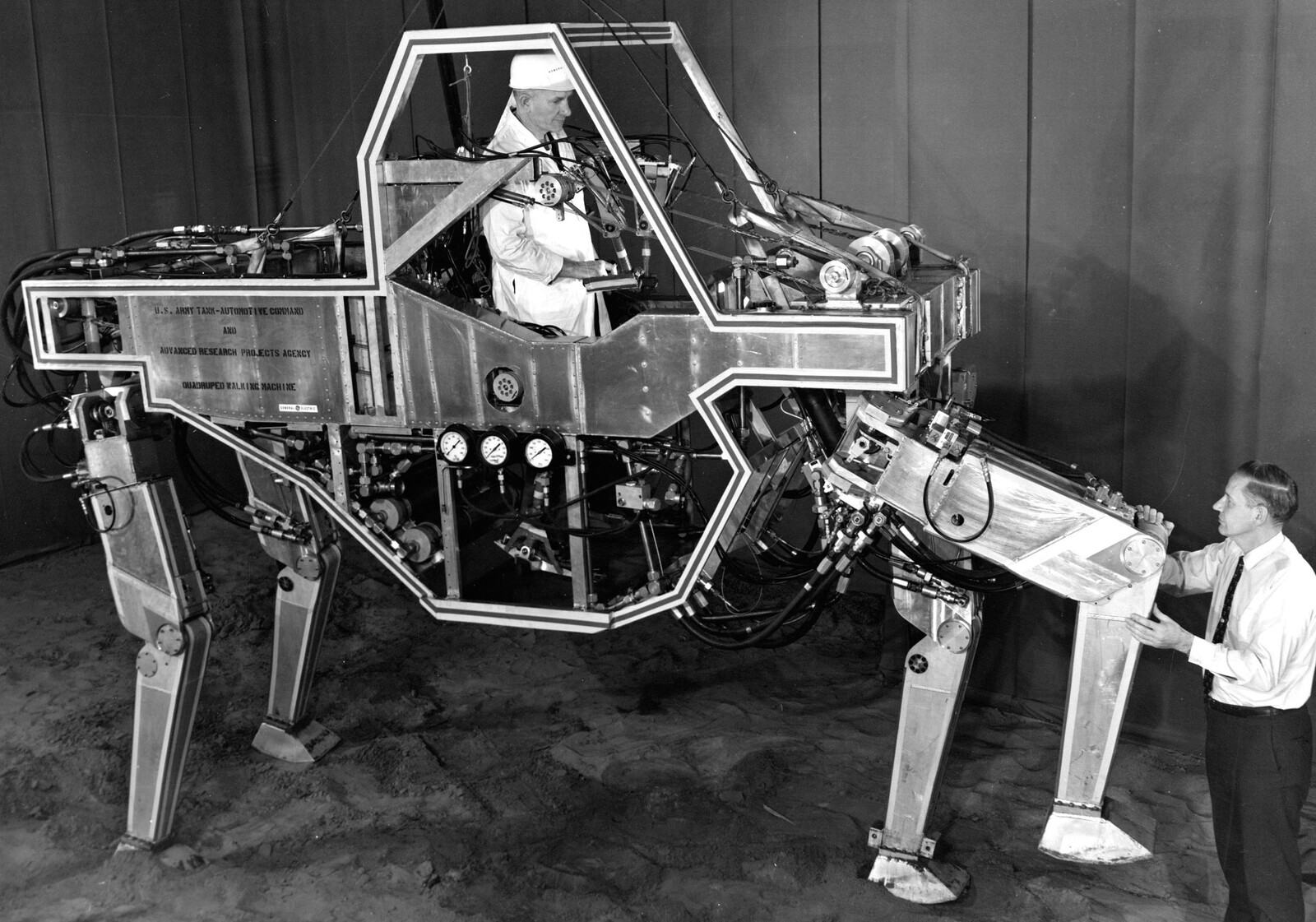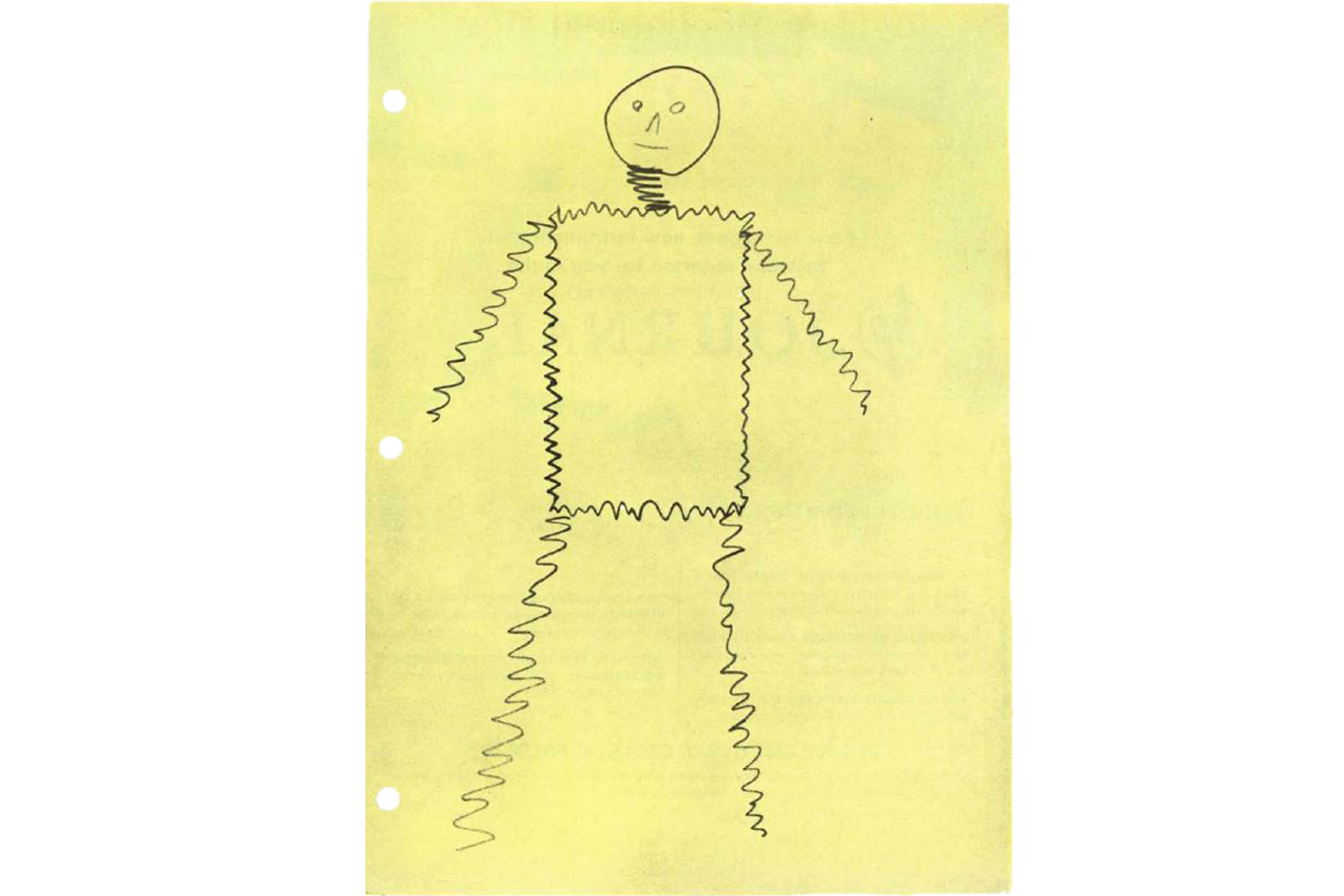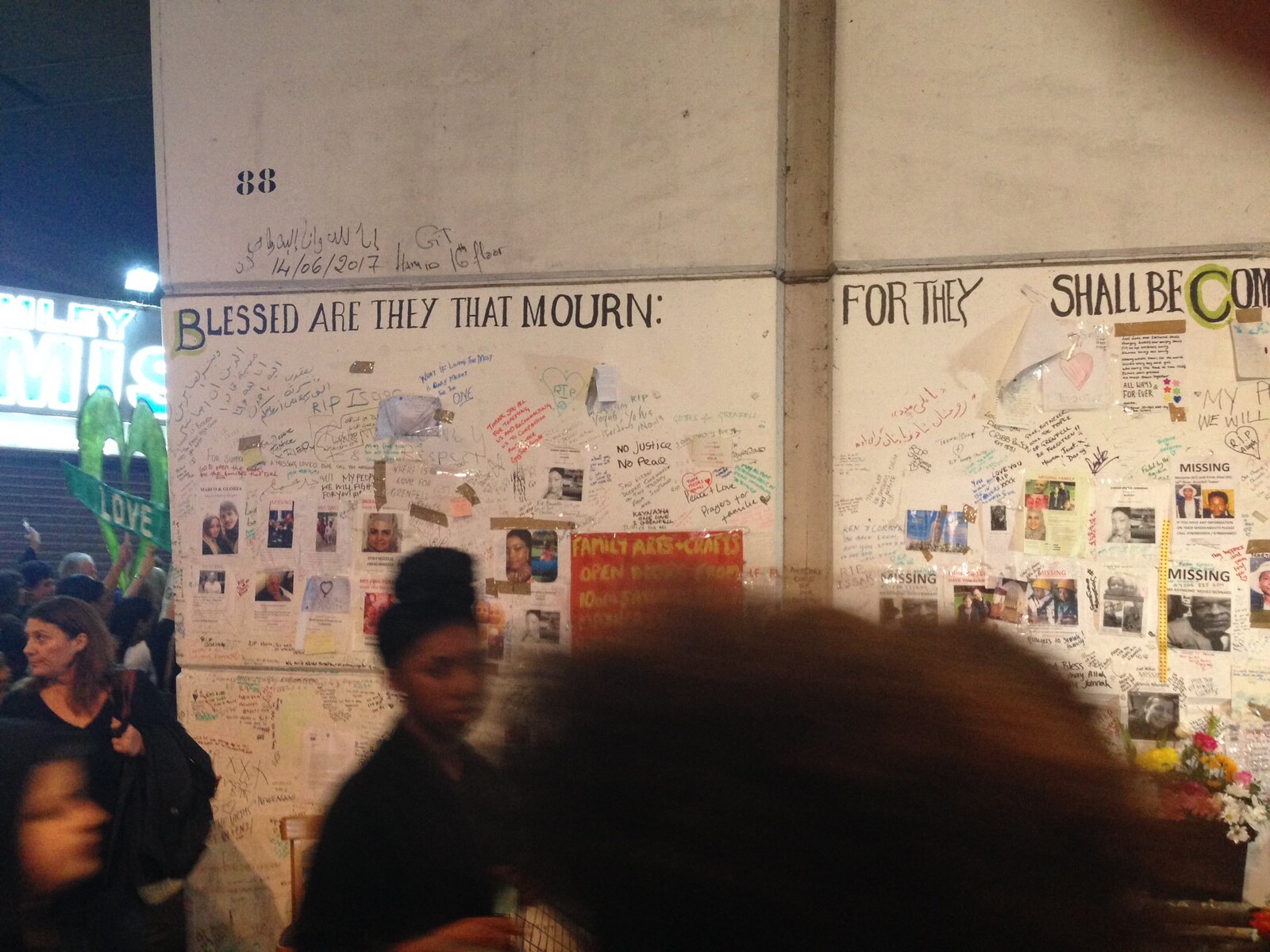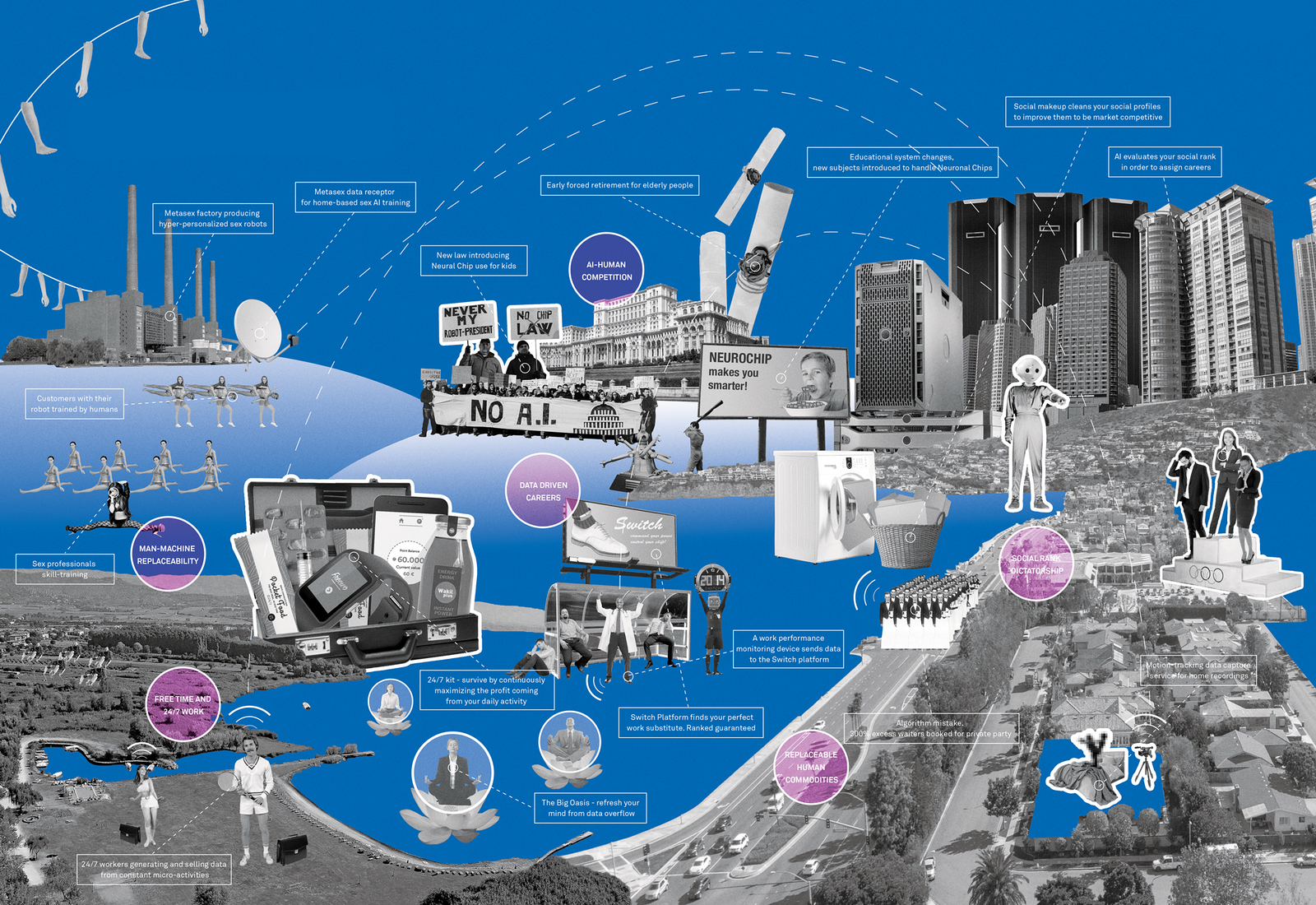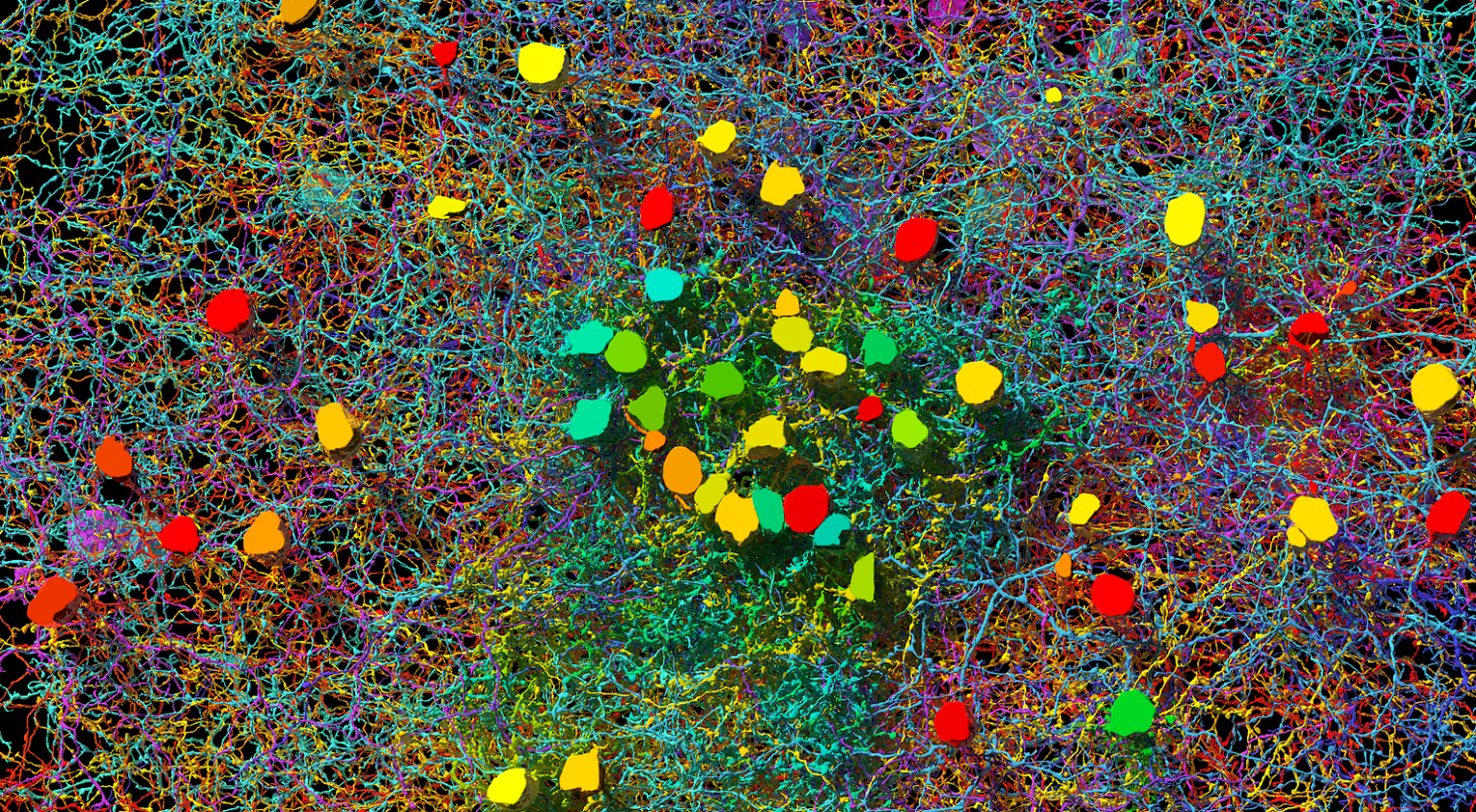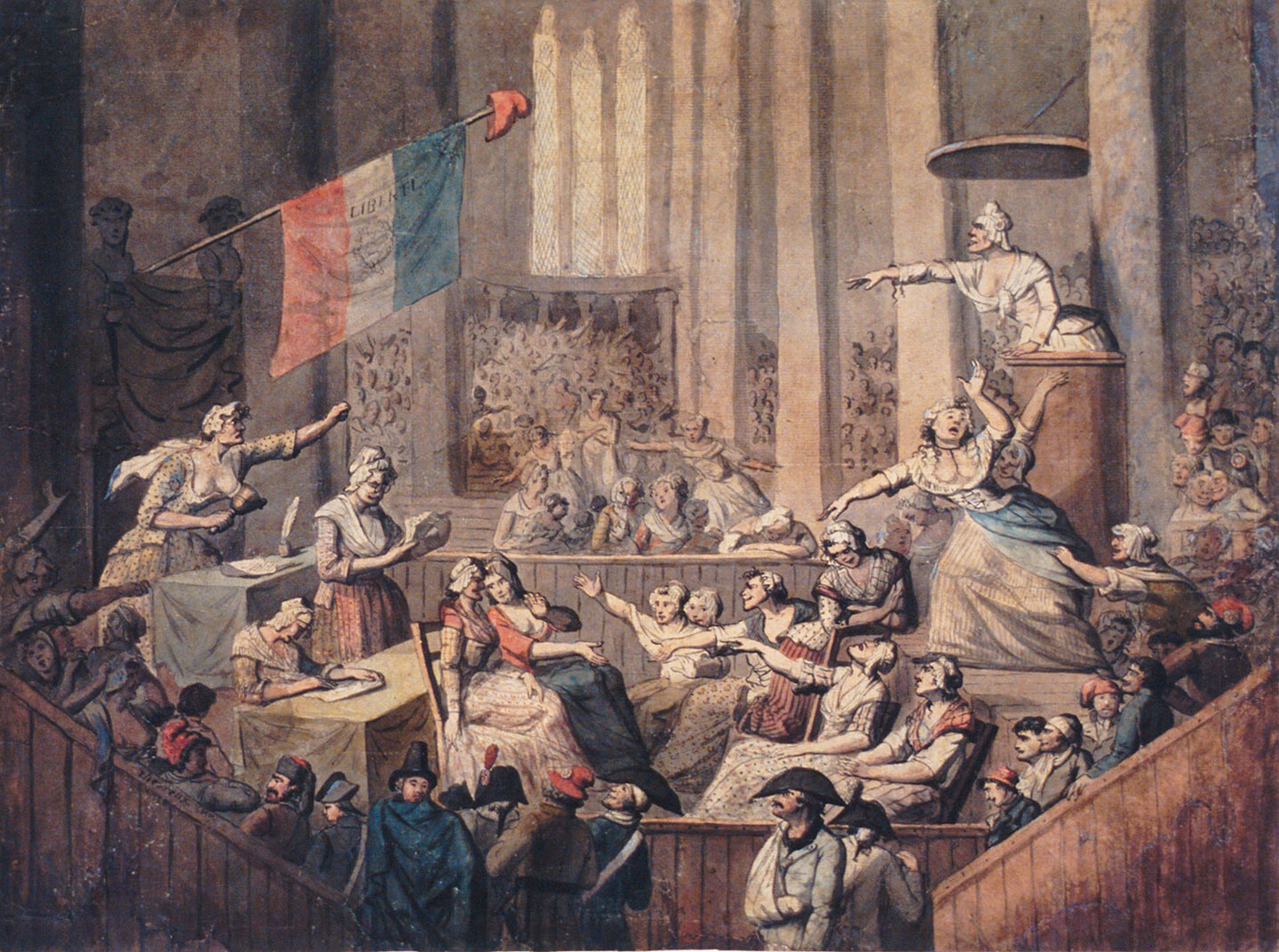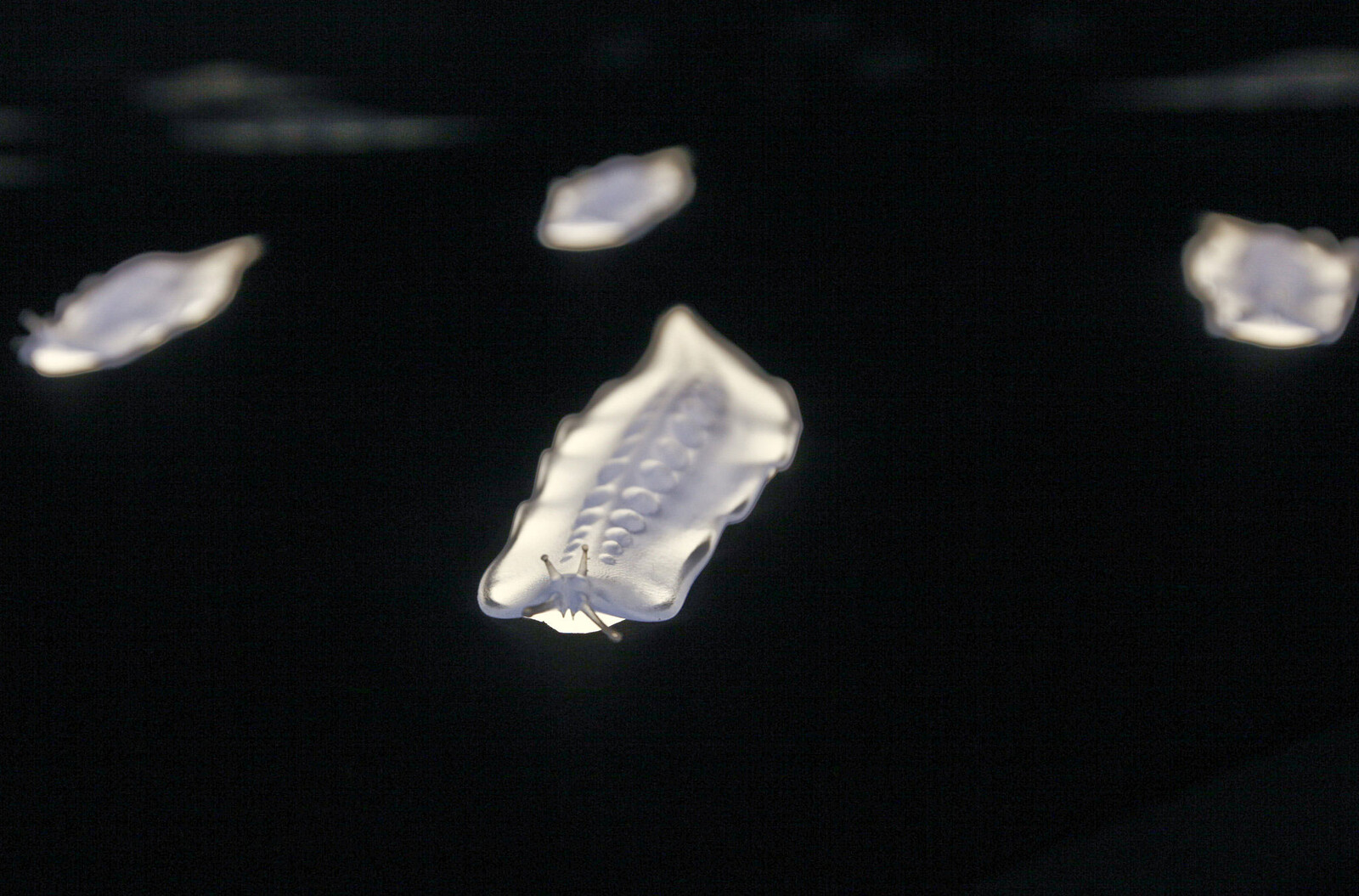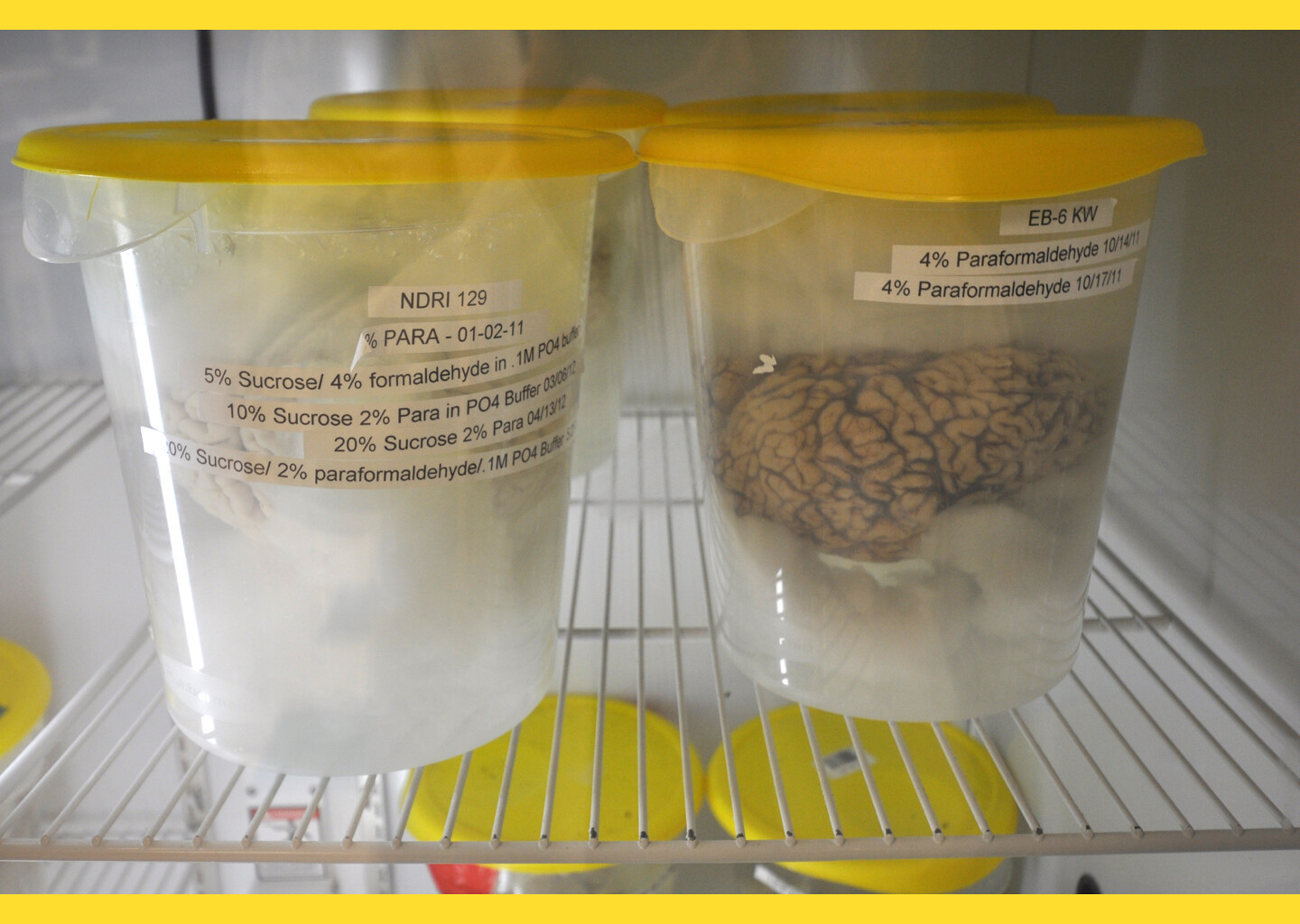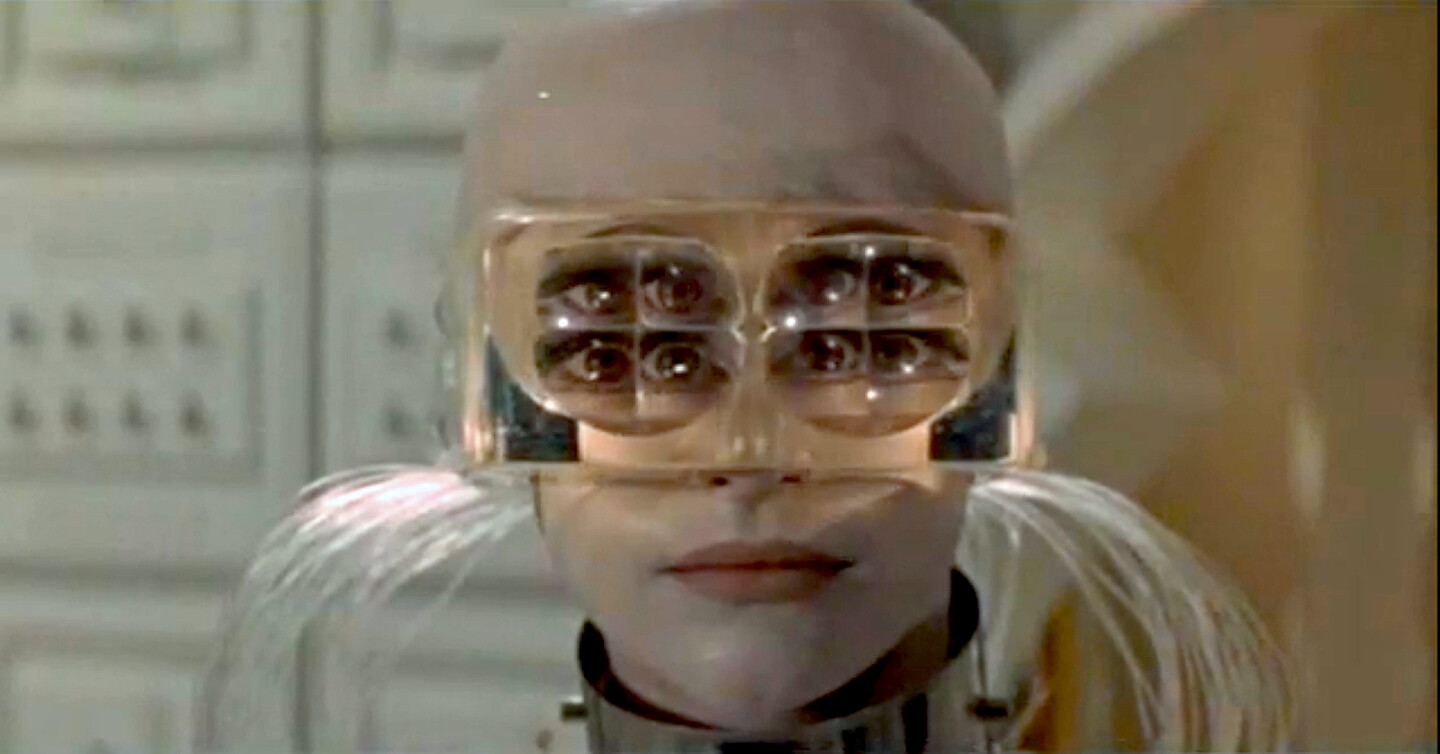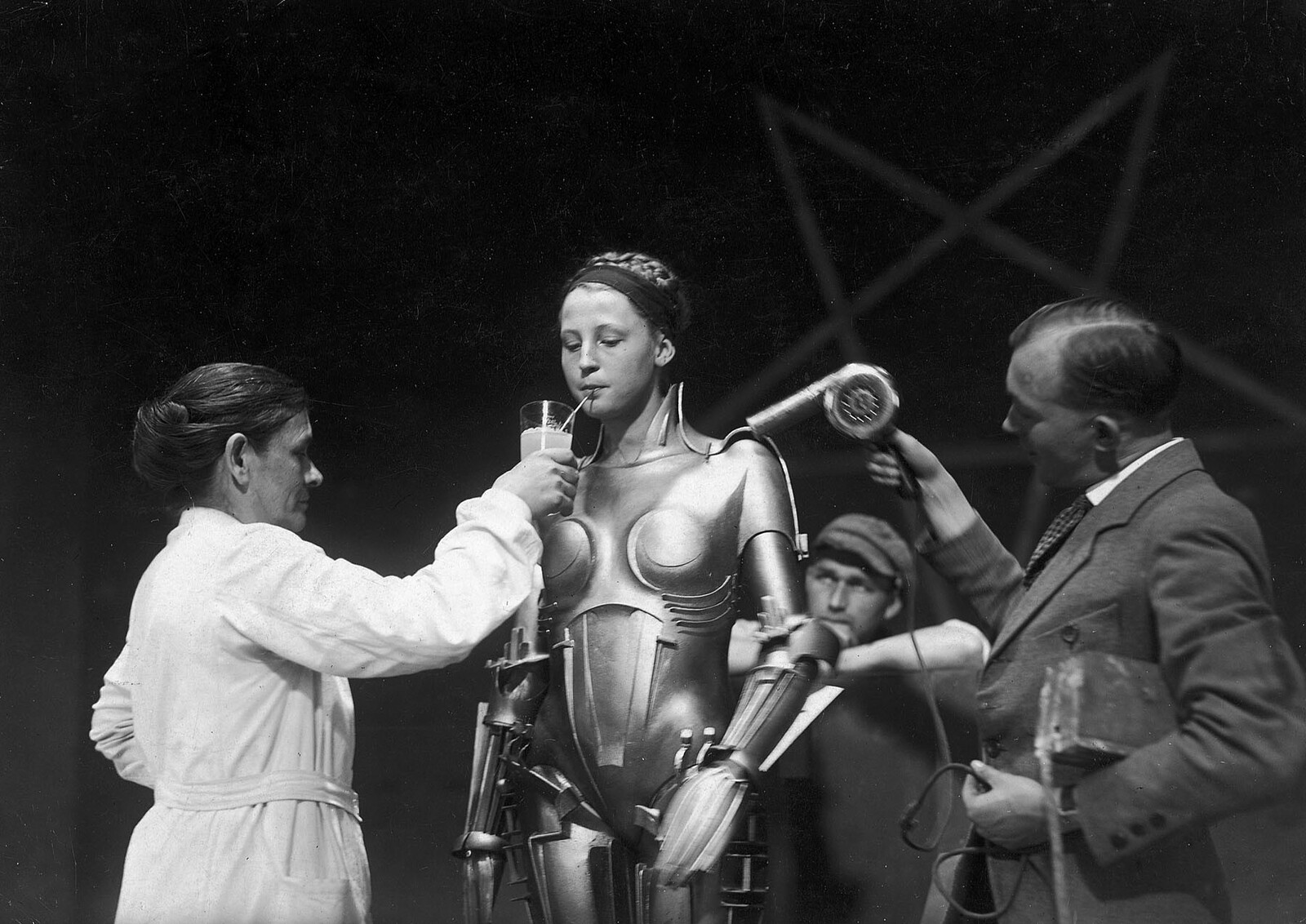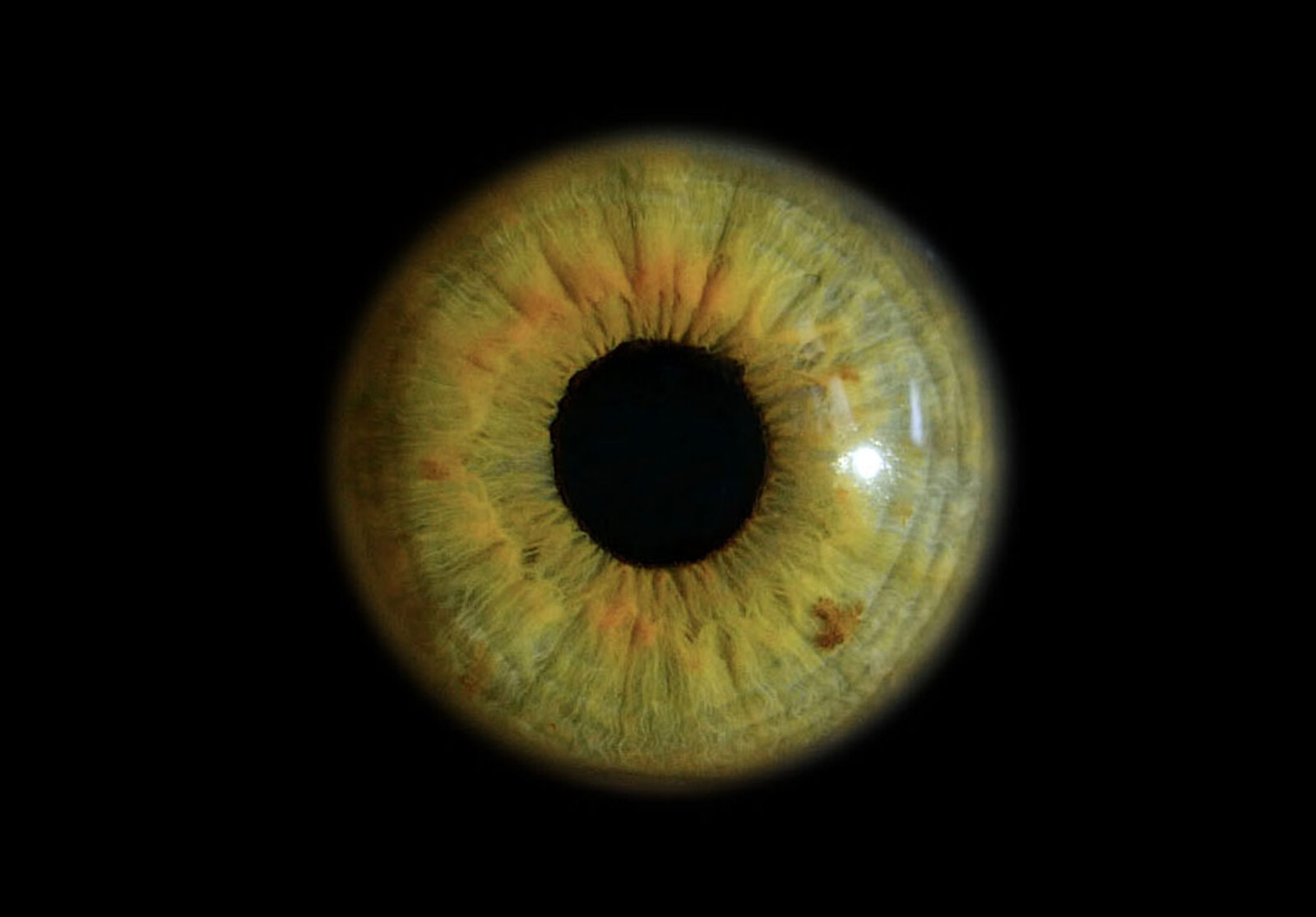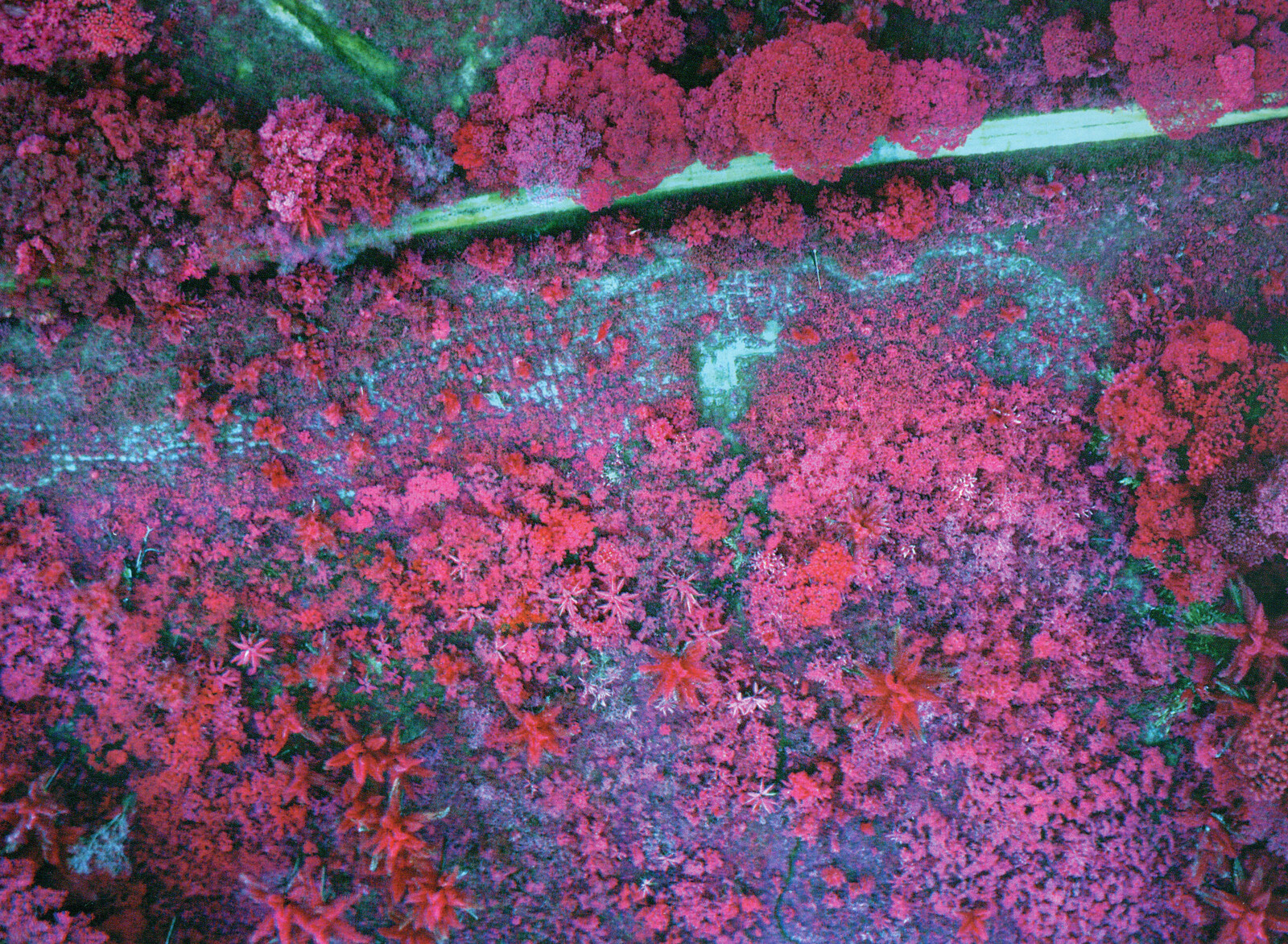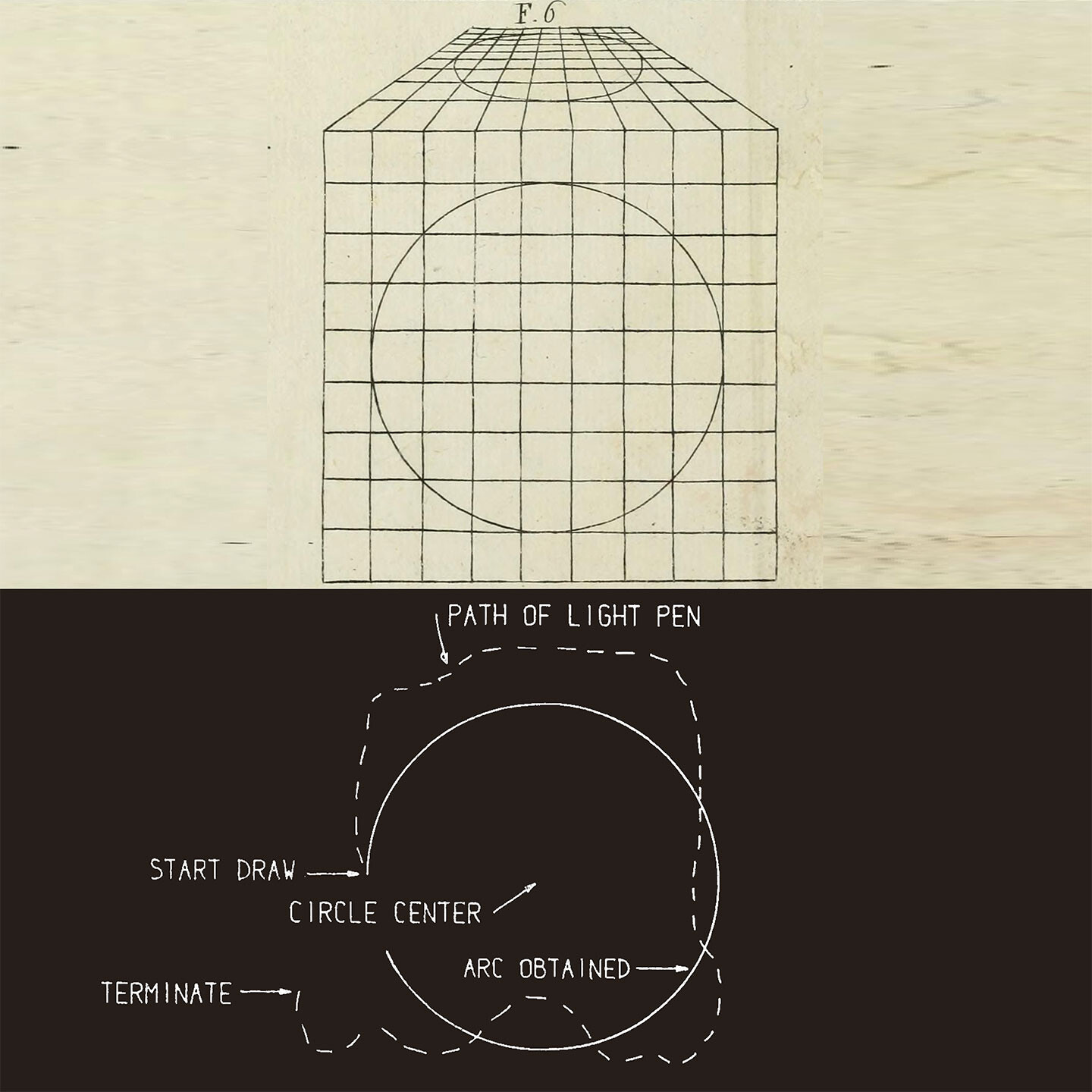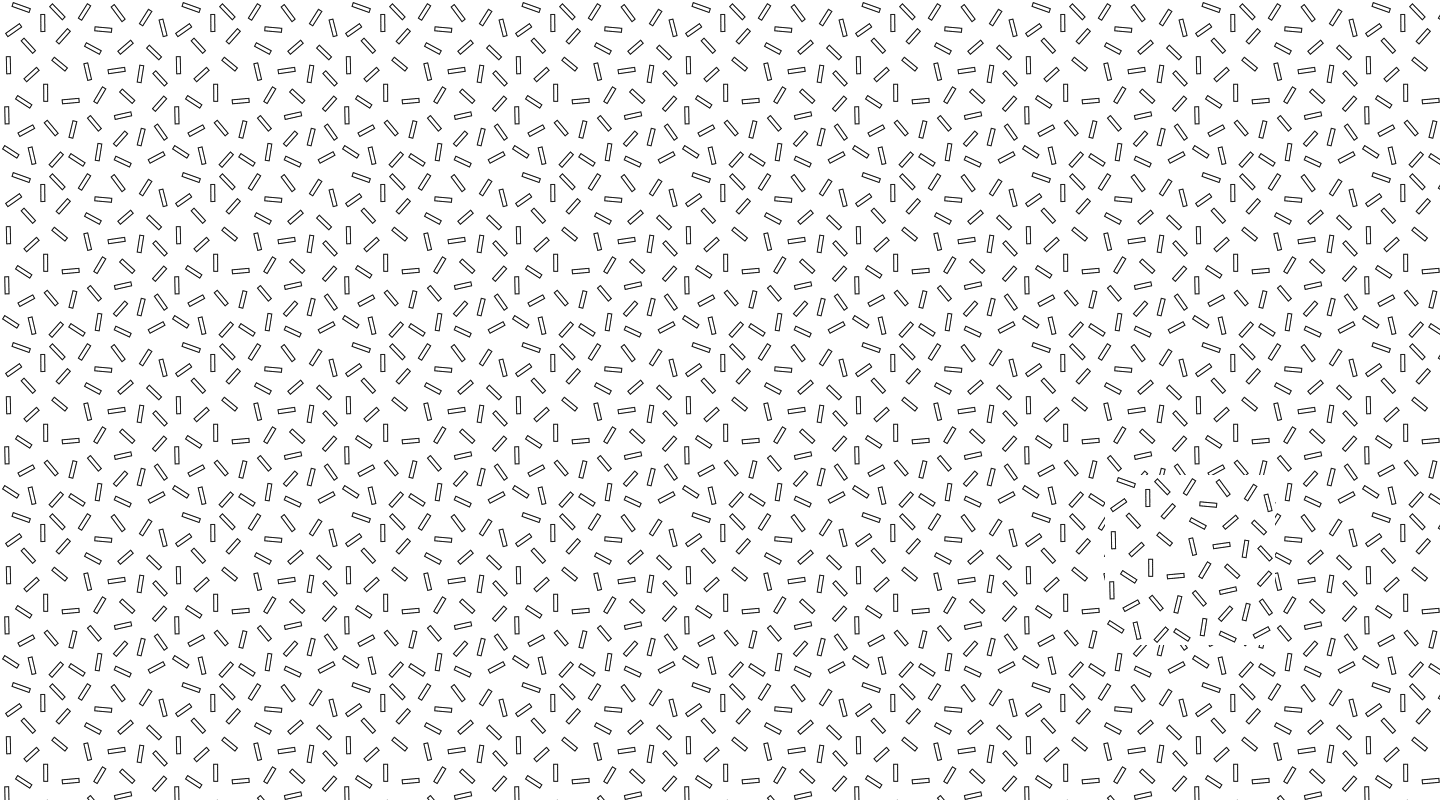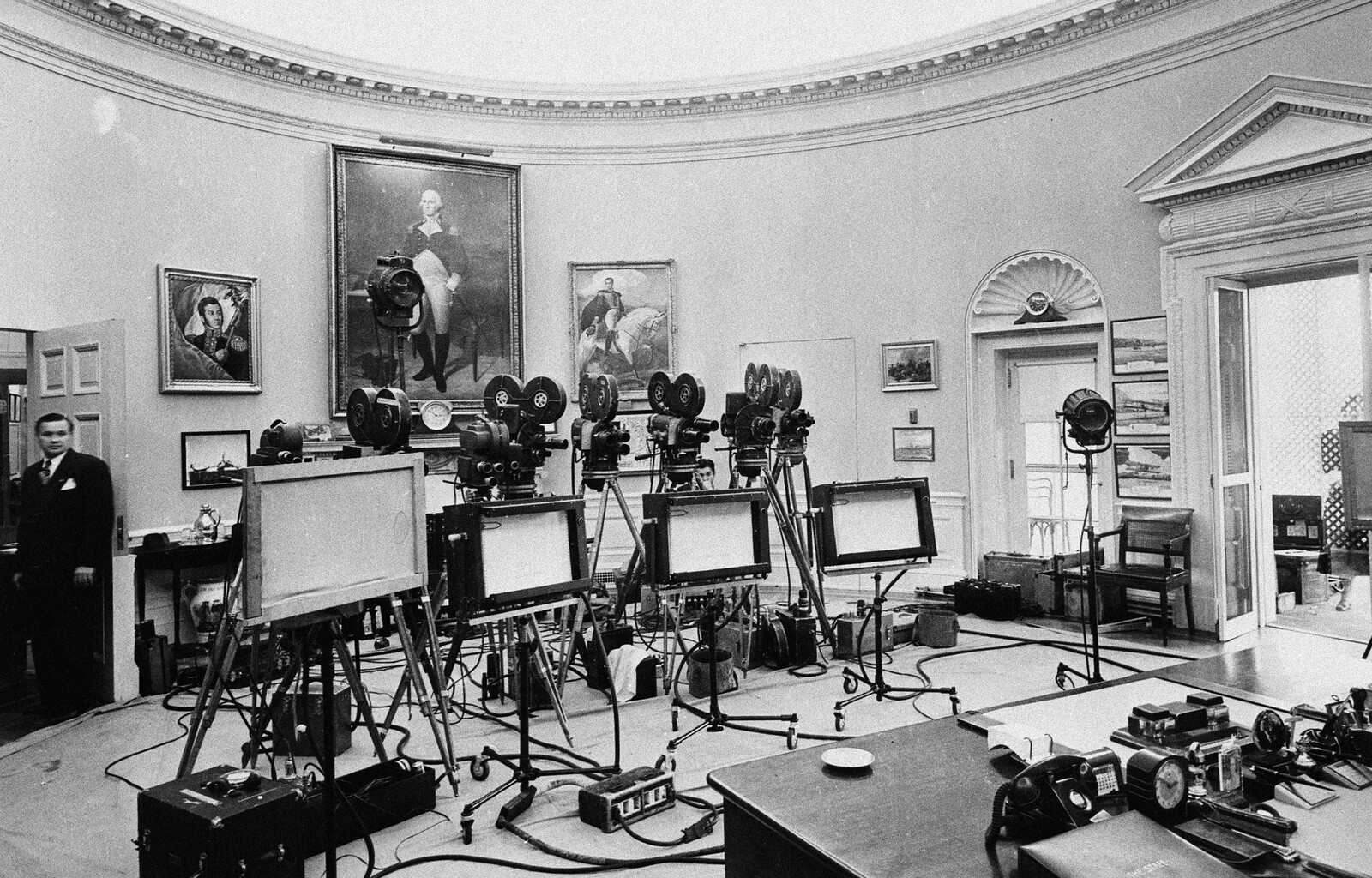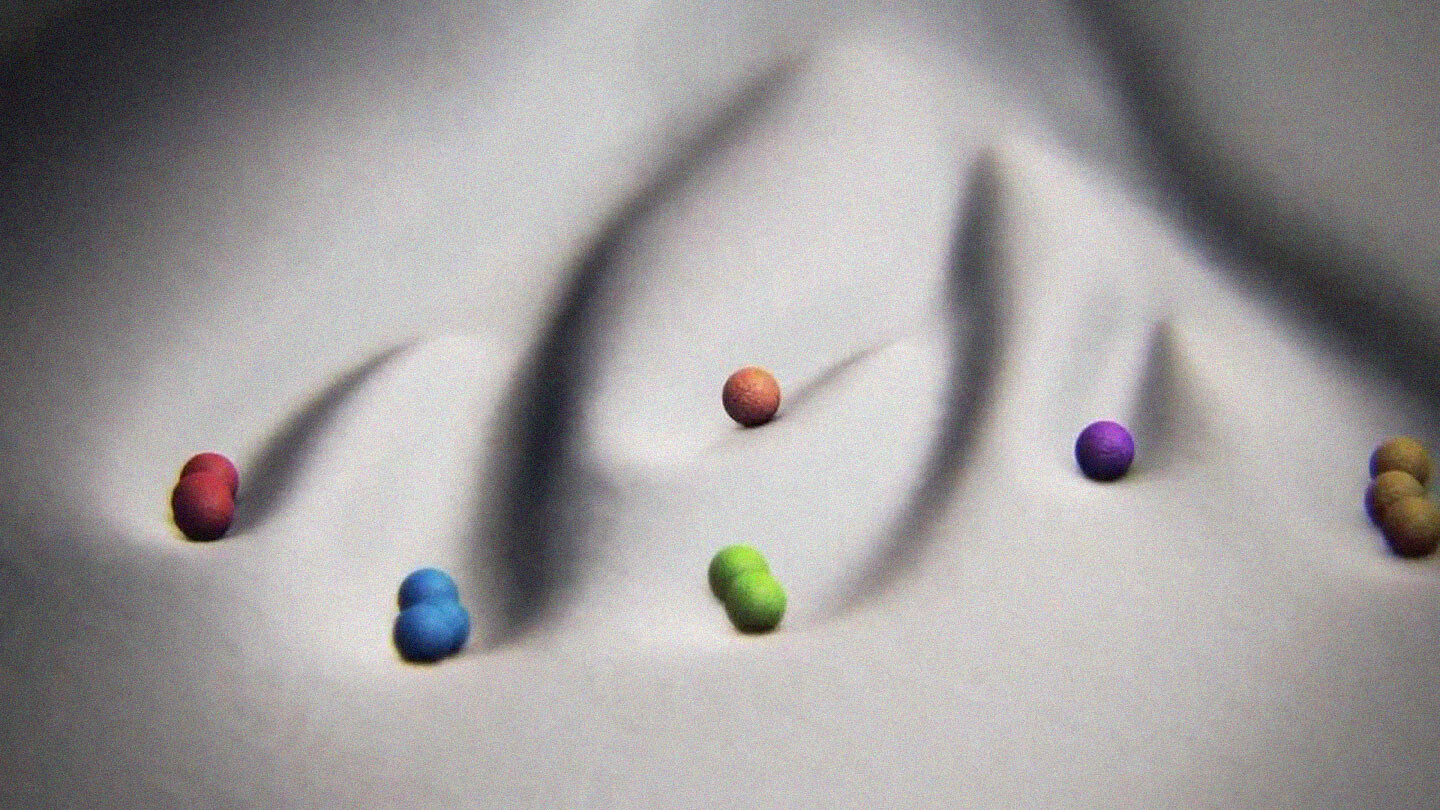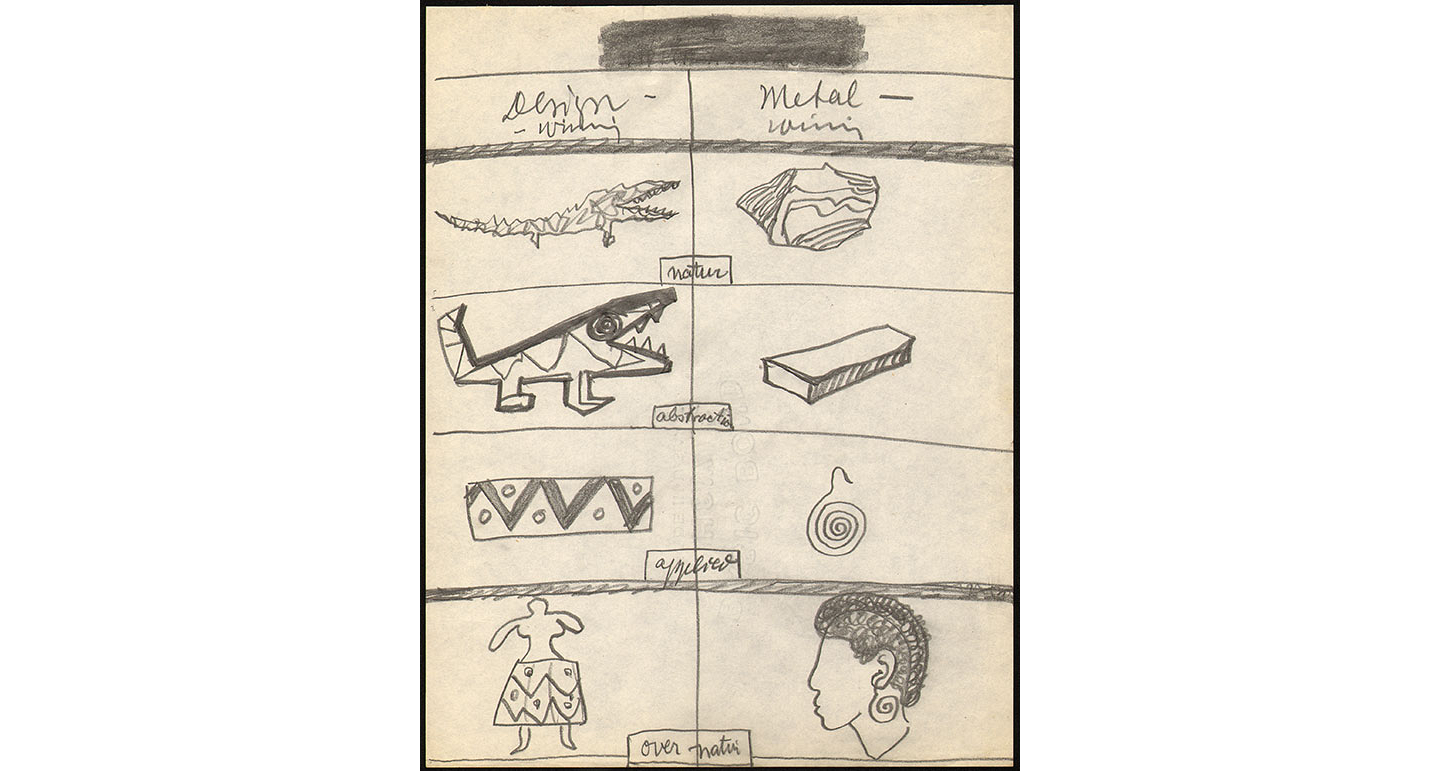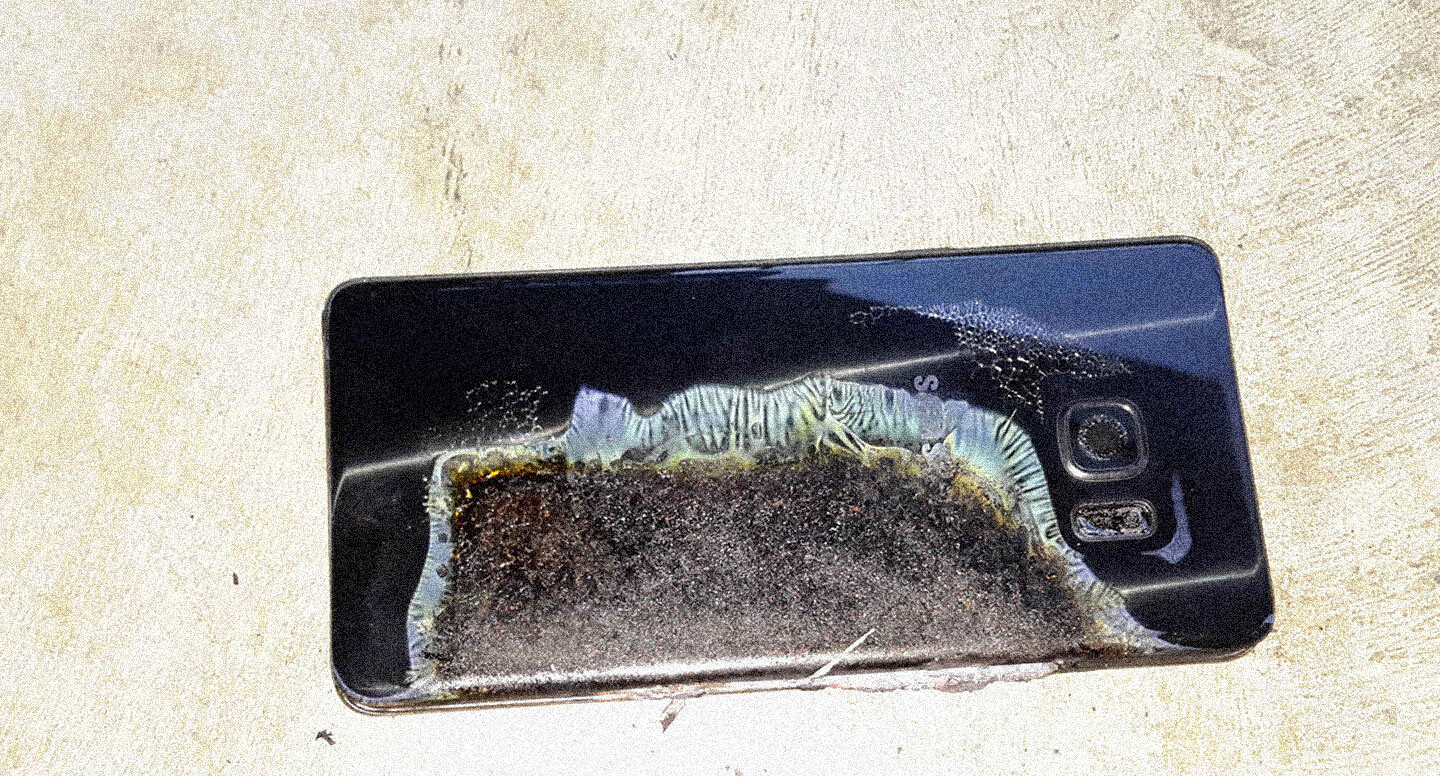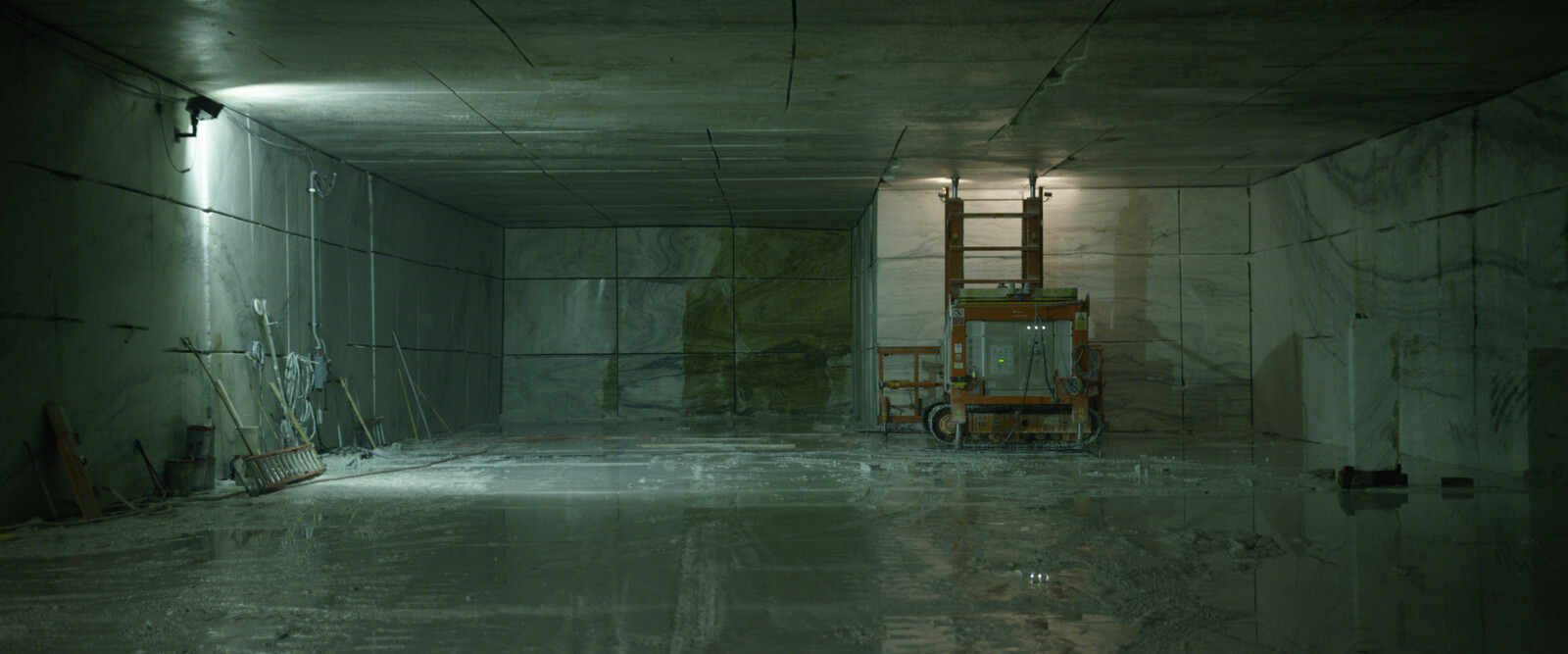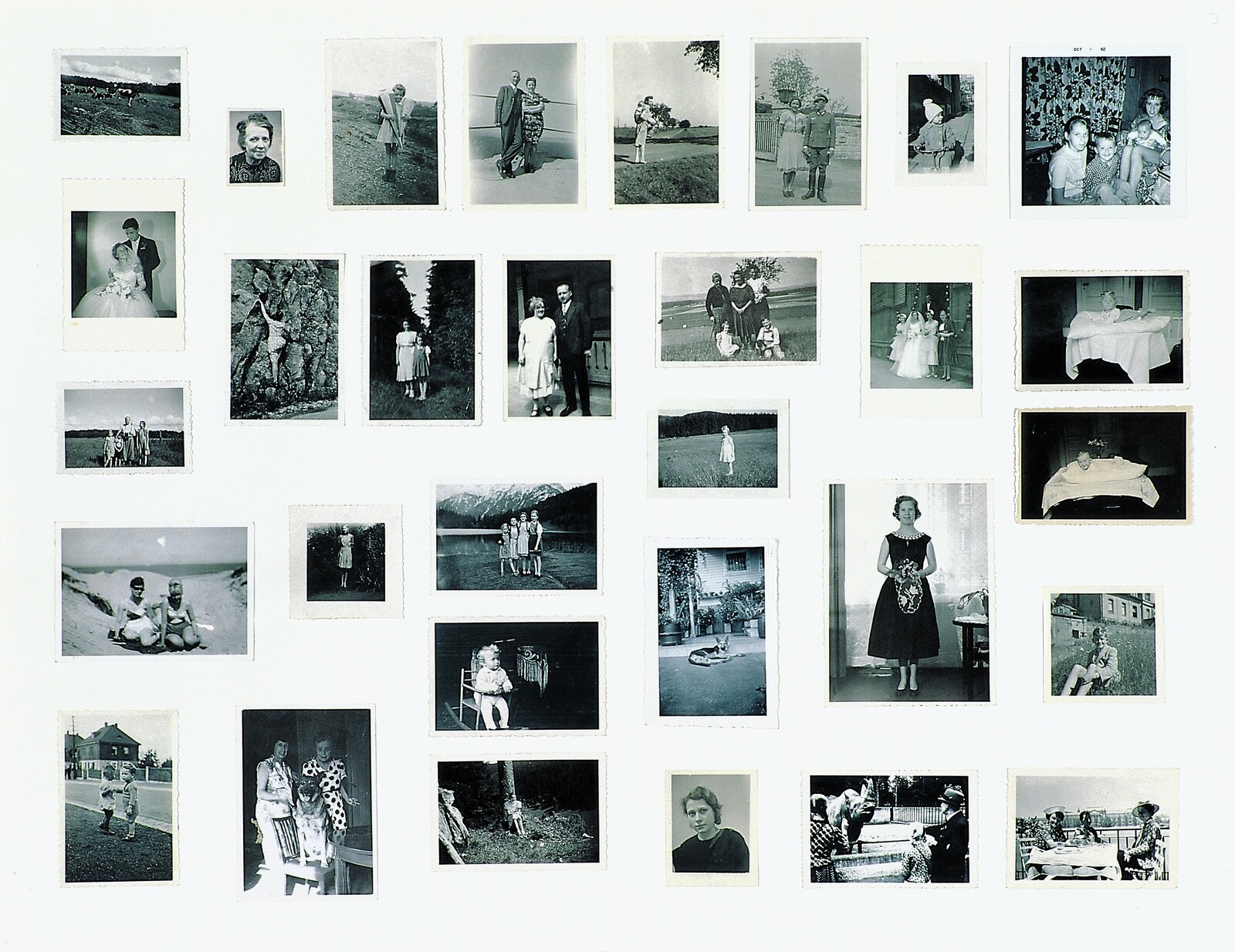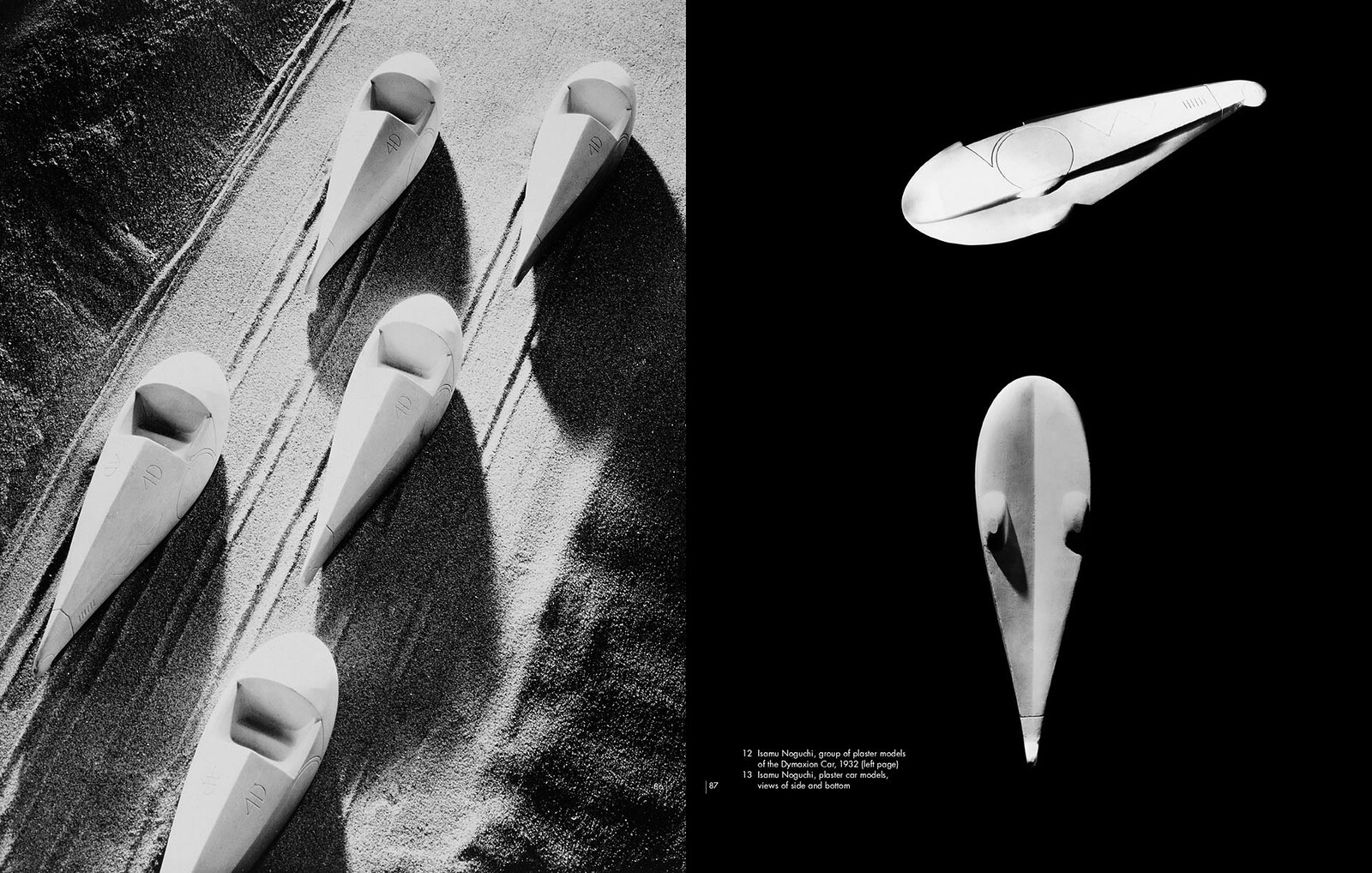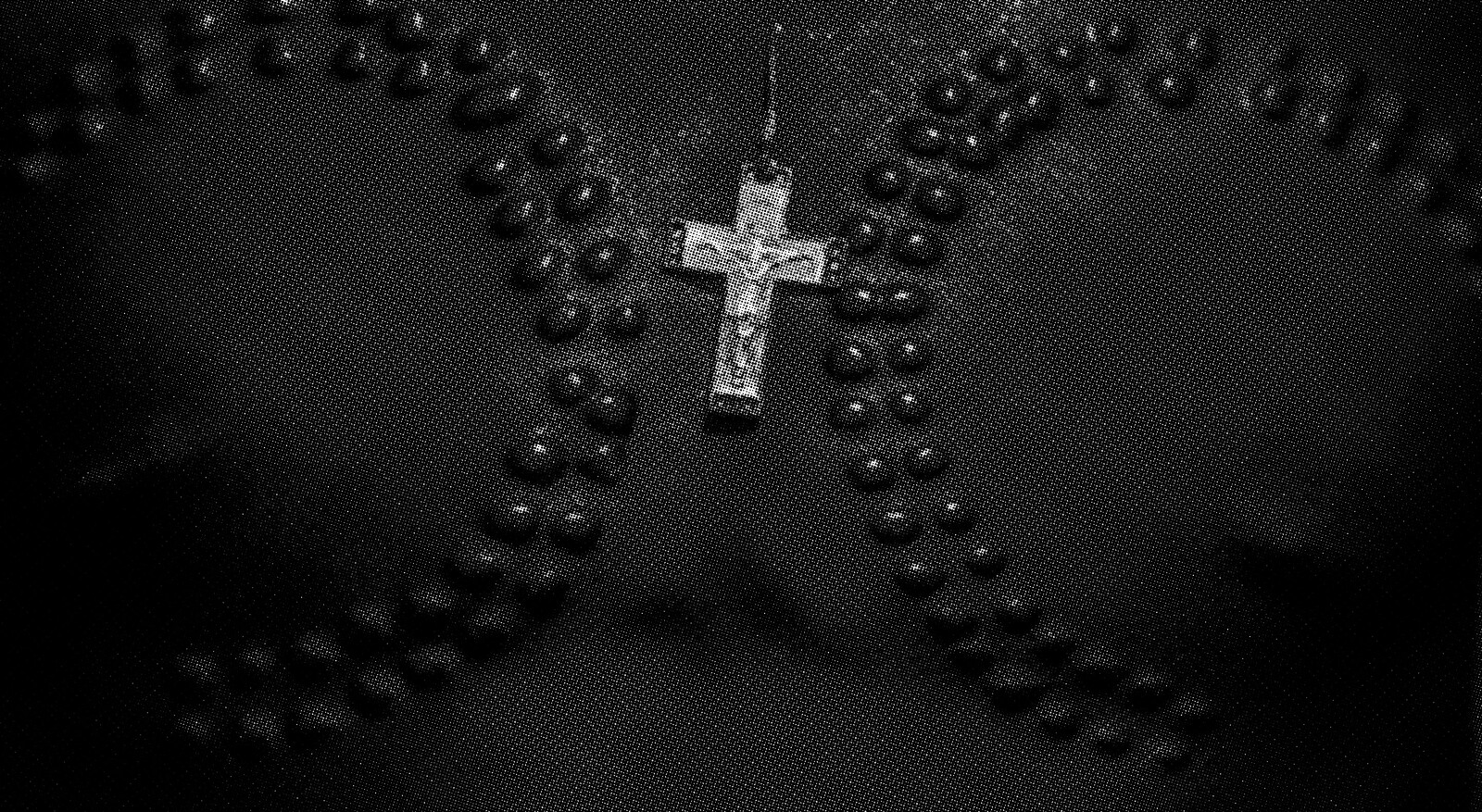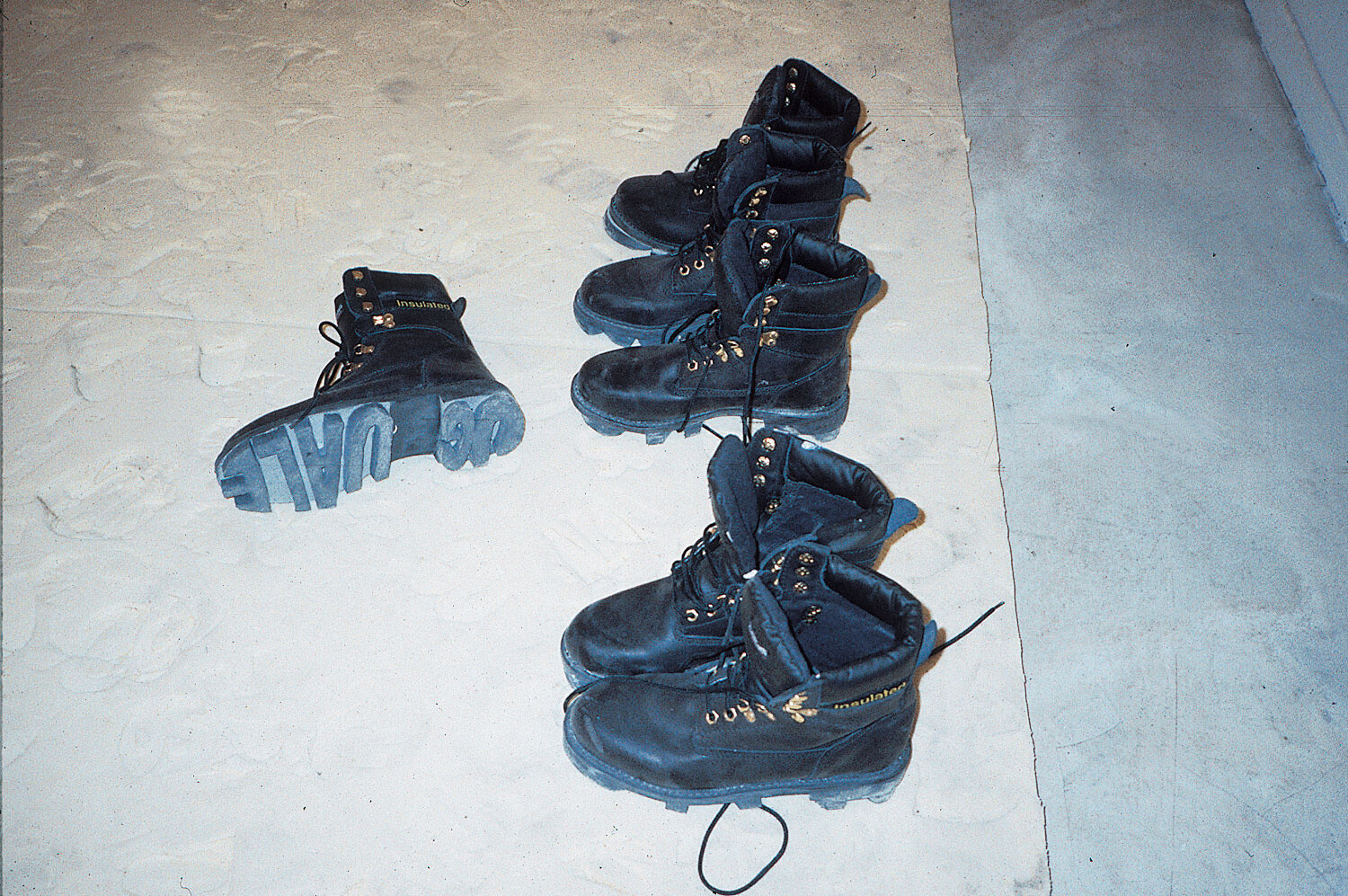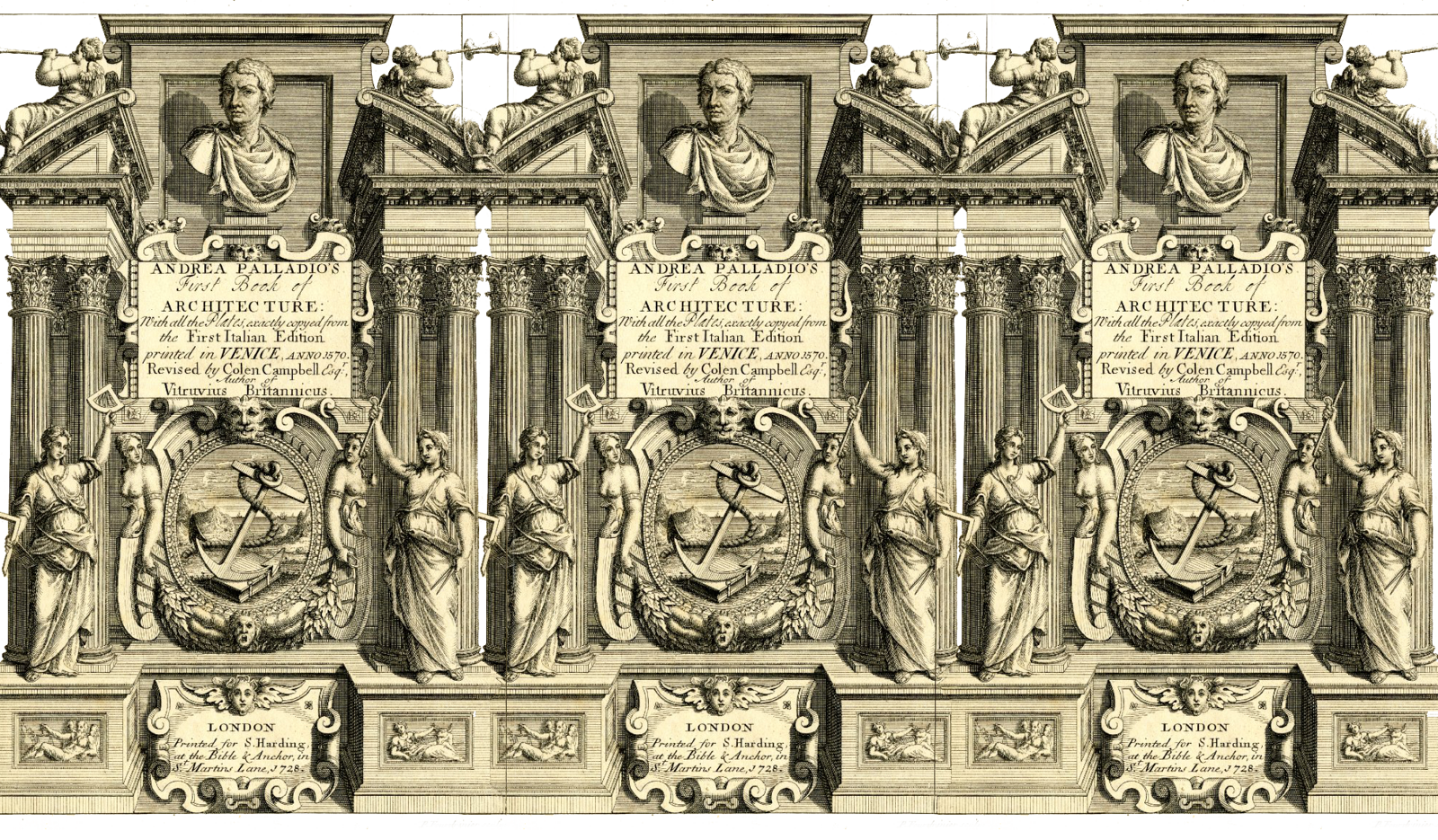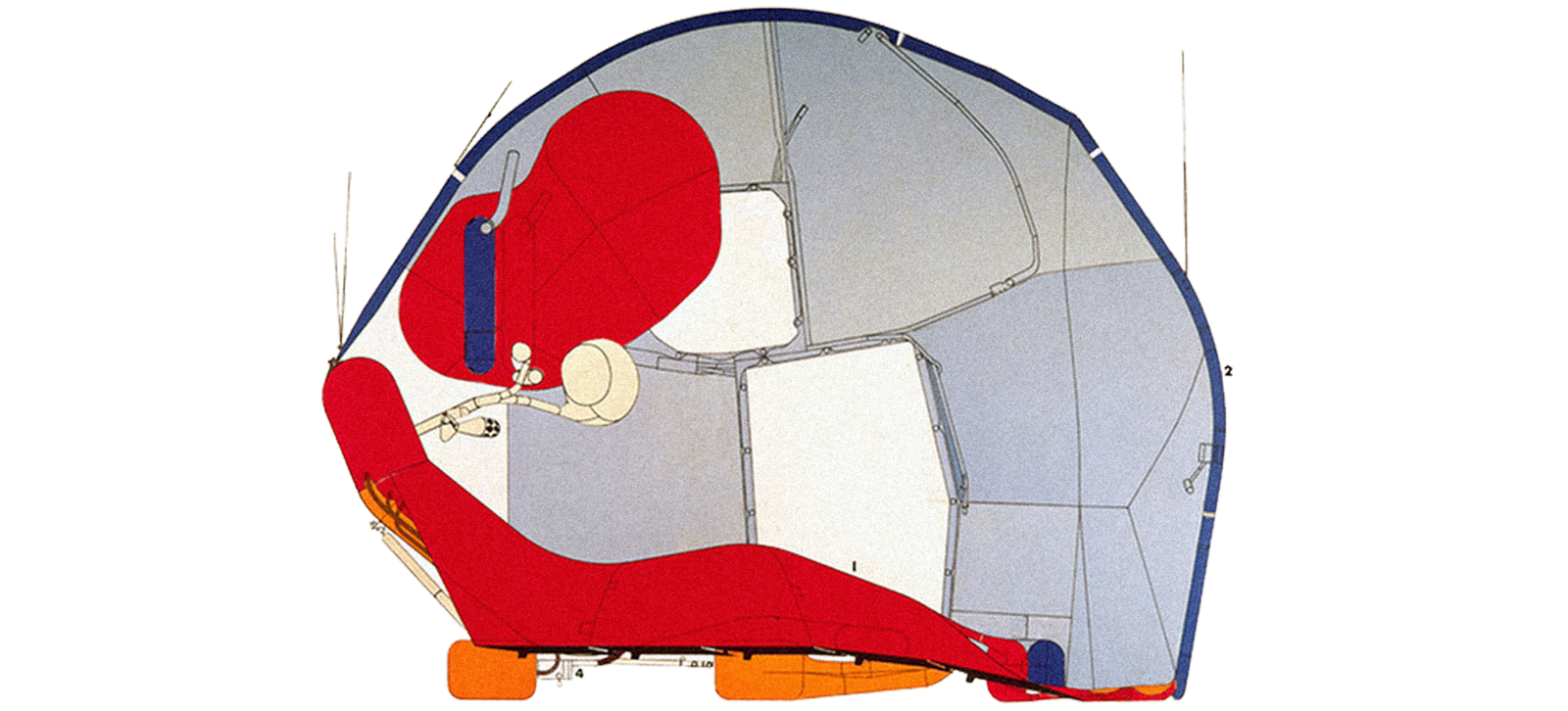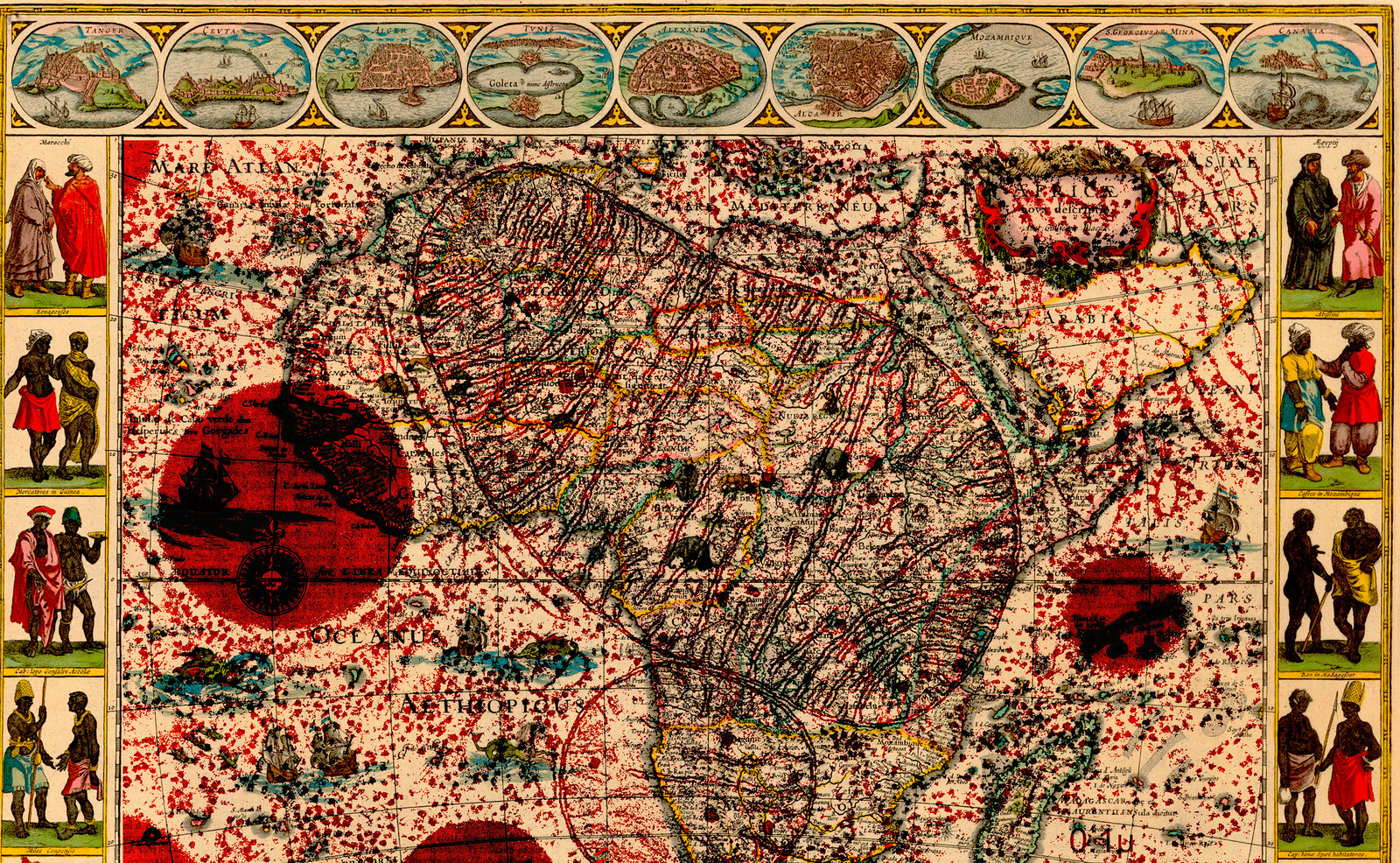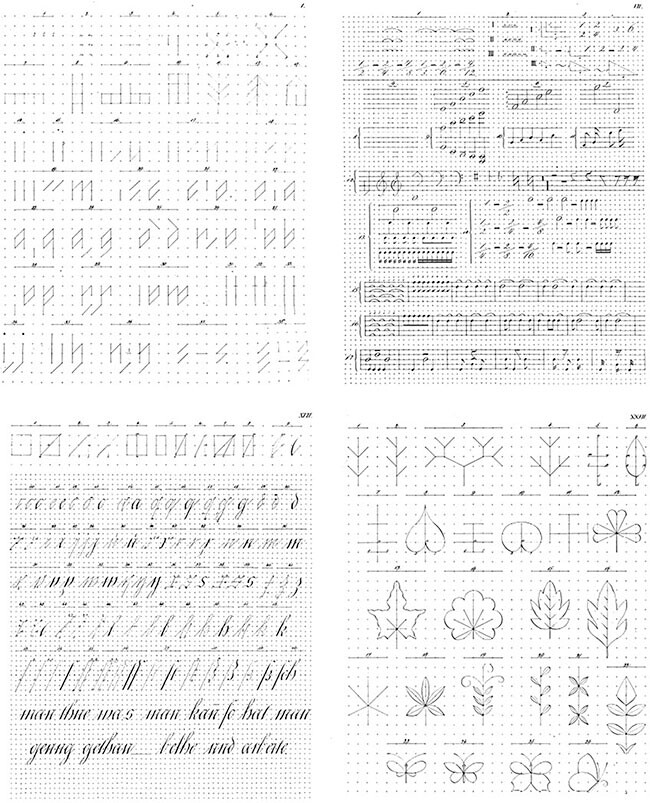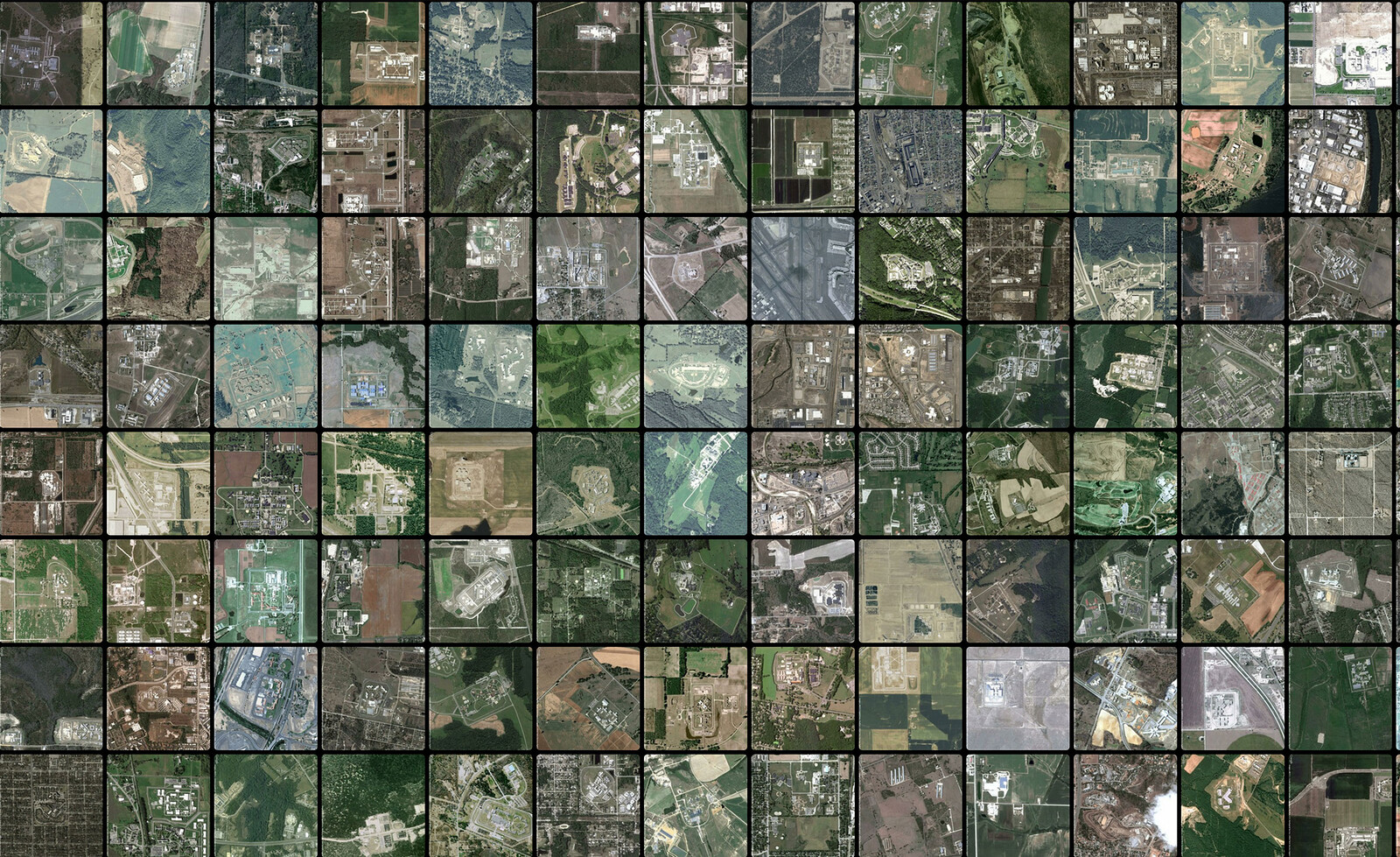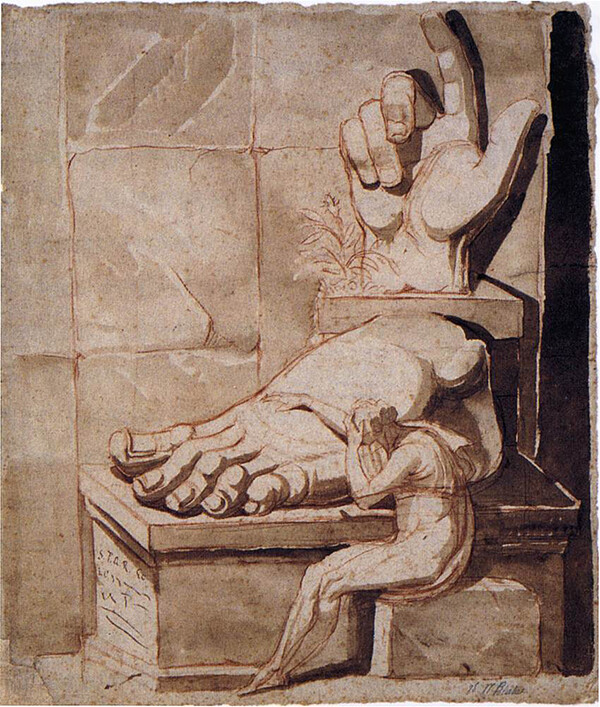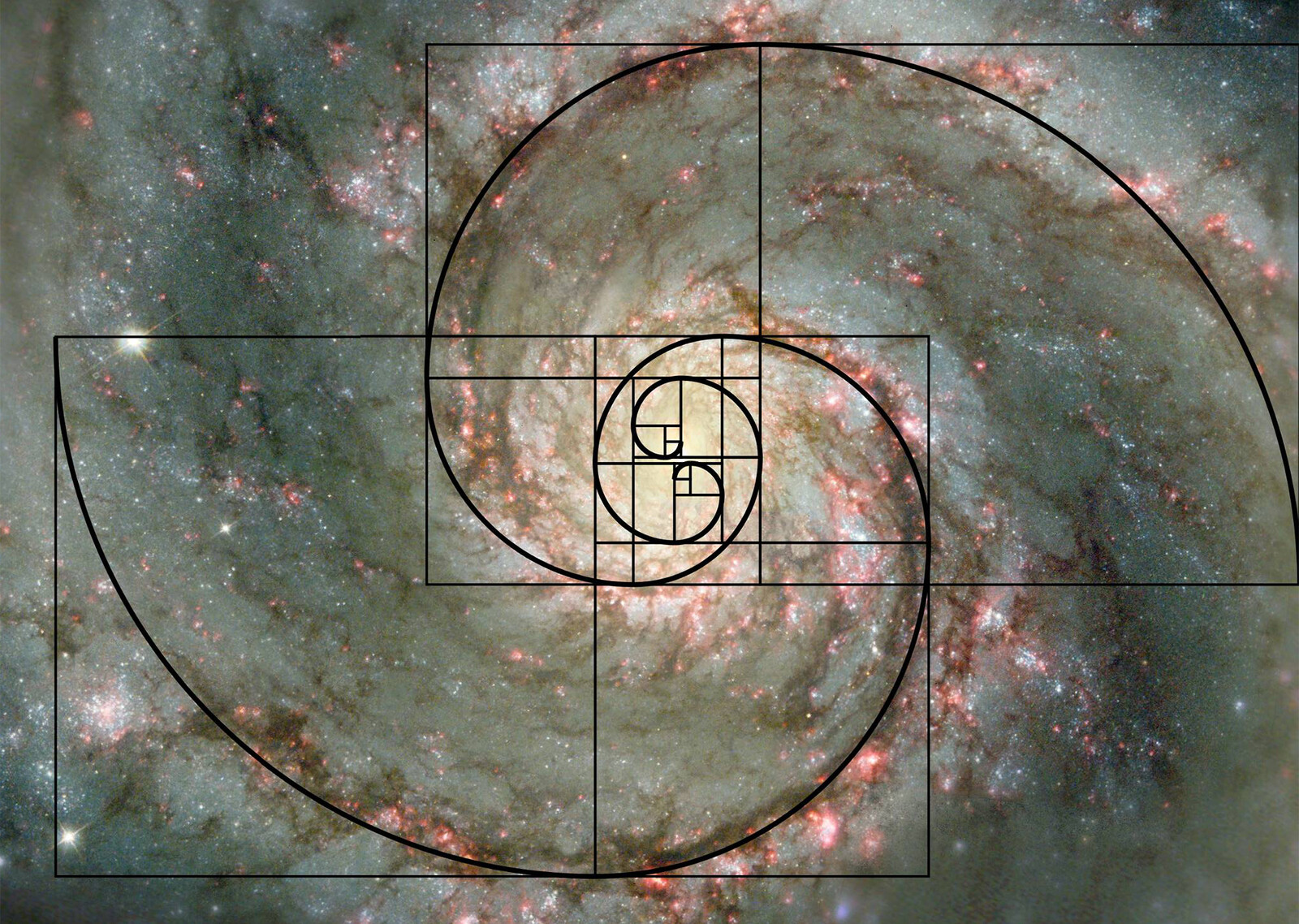When Aristophanes was summoned in Plato’s symposium to speak of eros (έρως), he reverted to the root of human nature, the bodily reality of three sexes: male, female and the vanished malefemale (αρσενικοθήλυκο).1 The latter was the strongest and fastest of all, combining both male and female attributes. Its appearance was whole and round with four hands and legs, two faces, and a back on all sides. The creature was not erect and would never stand vertical to the earth. It did not walk, but tumbled after taking a spherical shape. Its power of completeness became a threat to the gods, so Zeus invented a machine, destined not to eliminate the third sex, but to fade its supremacy; he sent a lightning bolt to split the sex.2 As soon as the creature was fractured, each half ran with passion to the other because its desire for reunification was greater than hunger or survival. So according to Aristophanes, eros is inherent to human nature as the tormented journey for reunion of original descent.3 Eros attempts to make the two more than one and thus remedy the original shortcoming of each as a split symbol.
Aristophanes’ duality was displaced later in the Symposium by Diotima’s version of eros (narrated by Socrates), as a multidimensional diaspora (διασπορά) of the body in floating fragments; a fractured ego looking not simply for the other, but for pieces of one’s body. Following this, it becomes evident that eros is as much directed to the “other” as it is to the “self” of one’s body, as it narrates erotic desire stemming not merely from a longing for completion, but also from an intense desire to replicate the “self,” one’s body and identity; to enlarge and prolong it to eternity.
The story of designing, editing and replicating ourselves is as much a story of love as one of slavery. Jumping from circa 380BC to 1974, the desire for a replicate body that would complement and exponentially augment its carrier returns as an advanced engineering experiment filed by NASA in United States Patent #4046262.4 Under the rubric of experiments for man-machine integration, the contentious term “master-slave” has consistently been used since the late 1950s for anthropomorphic manipulator systems, and later on for computer networking. In the patent, the “slave” is a mechanical replica of the body and armature of the “master,” designed to carry unimaginable loads and endure all possible injury, virtually without consequence to the user. The term-pair was later used to define a centralized communication protocol: one device or process, the master, would control all others, the slaves. In 2003, with the rise of distributed computing, “master/slave” was banned by the County of Los Angeles, and subsequently by the Global Language Monitor, as one of the most egregious and offensive terms of the year. Nevertheless, if we allow ourselves to look beyond the politics of domination restated as computer theory, one can find a story of melancholy and deep anxiety as much as one of mechanized authority. As we travel in time from an unsubstantiated myth to a carefully designed patent, the replication of our bodies quite clearly demonstrates the persistence of our schizoid existence and delusion for wholeness.
At present, the pervasive use of social media (Facebook, LinkedIn, Twitter, Instagram et al.) requires us to carefully construct and steadily edit digital identities, projecting the “self” into a carefully designed entity assembled of data fragments. While this practice is unlike the mechanical anthropomorphic body that literally replicates the physique of the body, the reproduction of the self online still enforces a type of master/slave relationship and a yearning for a mirror image either materialized or narrated. Our digital selves are possibly even more accurate versions of us than our raw physical bodies walking in flesh. In every post we review, control and refine with utmost care how to project our own design. As Sherry Turkle argues, posting allows us to present the self we want to be—not too little, not too much, but just right.5 Who is the slave, though, in this newer, nuanced version of self-replication? Is the ethereal online identity we build analogous to NASA’s patent? Or is it the other way around; are we are in fact voluntary slaves of what we have earnestly designed with love?
Augmented Man+ / Atrophic Man-
In the cold war period, the design of the body was reflected in both the astronaut and aquanaut who promised to conquer uninhabitable regions with armored suits carrying earthlike environments inside. An augmented and engineered type of man became of larger cultural interest, portraying a new universal human subject. Unlike the Vitruvian Man or Le Corbusier’s Modulor that idealized a cosmic subject representative of humanity as a whole, these mechanized figures were put forth as guinea pigs: delegations of human agency in precise input/output measurements. The 1974 “master/slave” patent filed by NASA has a long line of precedents. Spearheaded by major subcontractors such as General Electric with joint support by the US Navy and Army, the 1950s and 1960s witnessed several programs that sought to augment human capabilities with mechanized slave limbs. The augmented man, with replicate bionic components and mechanized parts, was not merely preparing for a future of space exploration, but an active attempt to design exoskeletal armor for war.
General Electric engineer Ralph Mosher pioneered an extensive investigation on Cybernetic Anthropomorphous Machines (CAM), developing several robotic prototypes with extra limbs that would be directly tied to the human nervous system rather than operate autonomously. Mosher envisioned this type of union—our neurons translating desire into kinesis—as a wedding of sorts. In his own words, “Man and machine can be combined into an intimate, symbiotic unit that will perform essentially as one wedded system. The cybernetic anthropomorphous machine (CAM) will respond to irregular force and position patterns with the alacrity of man’s information and control system coupled with the machine’s power and ruggedness.”6 The wedding was further consummated by the key feature of force feedback that Mosher applied to all CAMs. In his machines, a mediated level of force was fed back to the human operator to give him a sense of the environmental interaction of the limbs under control.7
Mosher’s master/slave manipulator projects included the “Yes Man,” which Life magazine featured in 1956 as a robot assisting a lady into her coat; “Handyman” in 1958, a set of robotic arms operator controlled from a distance; the walking machine from 1962 called “The Pediculator”; the four legged “Walking Truck” in 1969; and finally “HardiMan”—an acronym for “Human Augmentation Research and Development Investigation”, plus “Man” from “MANipulator”—developed between 1965 and 1971. HardiMan was the first experiment with a powered exoskeleton frameworks with the controller inside the suit; whereas Handyman was remotely controlled, the user would sit inside HardiMan‘s skeleton, directly amplifying the wearer’s lifting ability and strength.
Other agencies quickly got involved with General Electric and Mosher’s man-machine control interfaces, including ARPA (Advanced Research Projects Agency), the Department of Defense and the US Navy.8 HardiMan‘s exoskeletal harness system was further developed by Cornell’s Aeronautical Laboratory, which appeared on John McHale’s Design Quarterly magazine cover from 1968 and ended up becoming one of his most lasting fixations. In his seminal book The Future of the Future, McHale invented the term “Man+” to speak not only of elaborate mechanical bodywork encasings, but also of solid feedback loops between man and machines in which motor impulses from nerves and muscles were picked up and fed to artificial muscles.9 As Mark Wigley argues, McHale’s fascination with artificial limbs and arthropod-like joints was not merely reflecting a prosthetic desire for accessorizing and augmenting the human body, but also the reconstruction of the body as a type of controlled artificial ecology.10
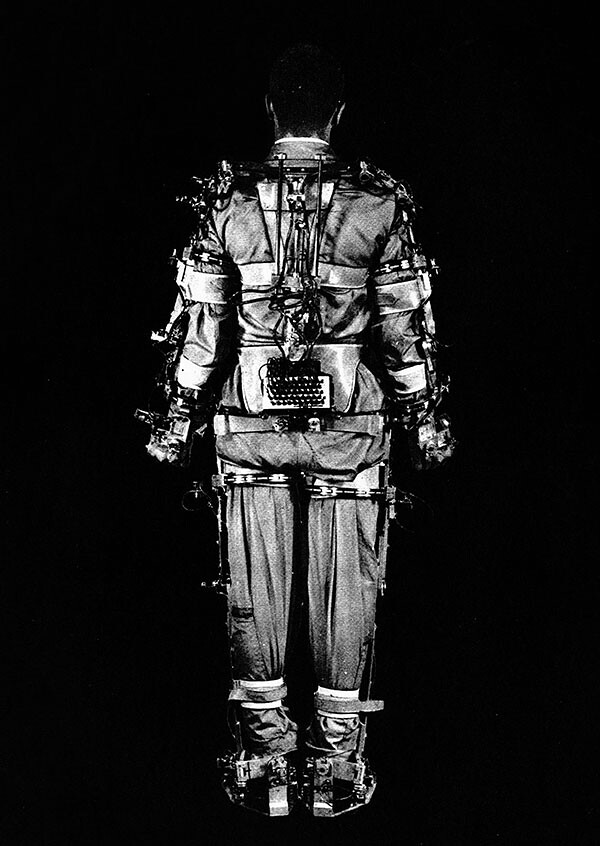

Cornell Aeronautical Laboratory’s exoskeletal harness system developed to increase man’s mechanical performance. The device picks up motor impulses from nerves and muscles which feed into the mechanical muscles. In John McHale, The Future of the Future (New York: George Braziller Inc, 1969).
In many respects, the extension of the human nervous system is analogous to connecting the body to a computer. In a computer interface, the human and the logistical operating system are interconnected on multiple levels; both sides are influenced by each other. The computer relays information enhancing the knowledge of the human as well as depicting its motives. In some cases, the computer/machine can overpower the human to the point where it is no longer needed. Such was the case with “Posture Chair,” a prototype designed by Greek architect and cybernetician Takes Zenetos in 1967.11 The chair was intended to accommodate all human activities as a duplicate body receptor—including sleeping, working, exercising, having sexual intercourse—and enhance one’s leisure with digital projections and immaterial microenvironments—all managed by a keyboard fastened to its arm. Equipped with a group of electromechanical devices for the control of temperature, sound and visual effects, the chair was a replicate body intended to re-sensitize the muscular and nervous system and to “decrease the disadvantages of daily routine life of the men involved in tertiary production.”12 Through a control processing system, the user could customize temporal microclimates, soundscapes and electronic digital displays. Zenetos describes the project as “a mobile spinal agent equipped with a remote control for tele-activities and a control center for optical-acoustic contacts, which will aid in the execution of tele-activities.”13
Even though Posture Chair extended the body’s capabilities, it introduced a different type of subject than the one featured inside McHale’s exoskeleton and Mosher’s HardiMan. If Man+ was stronger by virtue of anatomical replication, this was “Man-”. Posture Chair’s subject was tightly fastened, but not erect; soft and hairless, mushy and passive. It was designed as premature, portraying a new soma, stripped both of plethoric physical functions—such as too much movement—as well as physical object-like extensions—such as clothing and other prosthetic accessories. Man- was in a state of regressive corporeality. Posture Chair was designed to eventually immobilize the body, even lead it to atrophy while nourishing the mind and the senses. In some sense, Man- silently hoped that brainpower would become the ultimate computing device and directly control the environment. The brain was conceptualized as an information processor and transmitter able to project—with the aid of hypersensitive receivers of electro-mental waves—instructions for spatial reform, broadcast directly from the brain with no circuitry. Mechanical limbs, wires and infrastructure were dematerialized into wave spectrums, magnetic fields and energy flows.
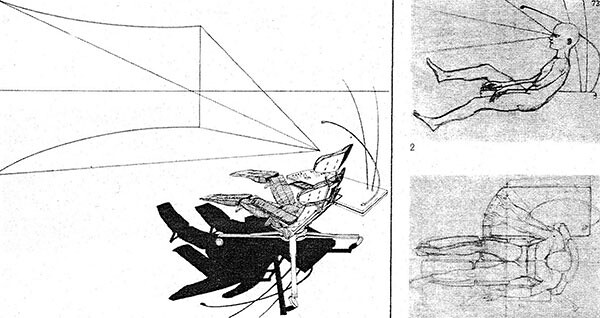

Takes Zenetos’ drawings illustrating the electromechanical equipment attached to “posture chair” for digital projections and immaterial environments. In Takes Ch. Zenetos, “Furniture for Living and Working in the Year 2000” in Architecture in Greece, Annual Review, No.3 (Athens: 1969).
Augmented Agency
In hindsight, the legacy of human augmentation thrives up until this day in an enormous amount of research going into military and commercial applications of body prosthetics and remote controlled robots. Boston Dynamic’s BigDog is the most advanced, seamlessly roaming through rough terrains with four legs articulated like an animal’s, able to absorb shock and recycle energy from one step to the next.14 Recently, the MARCbot (Multi-function Agile Remote-Controlled Robot), created by Exponent Inc., was lethally deployed as a bomb disposal machine for the first time by US Police.15 Considering today’s ubiquity of different genres of machines and machine learning with big data and responsive systems, “master/slave” devices exhibit little (if no) computational intelligence; that is, intelligence exhibited by machines with a learning capacity.16 Although referenced as reconnaisant robots, the flying drones of Amazon that are expected to pervade our skies by 2020, BigDog and MarcBot are controlled by a master user in a linear chain of command. Each master/slave machine might be limited in its operational intelligence, yet nevertheless, as Benjamin H. Bratton suggests, it is the vastness of their pervasion, spinning out on their own, that might have already formed the body of an accidental megastructure.17 Despite their differences, Man+ and Man- form a comprehensive understanding of the modern human condition, allowing us to witness how we safely reconstruct ourselves, believing in vain that the design is our own.
Master/slave designs can partly be seen as an aspirational projection of the world based on potentiality and connectivity that was presumed to accompany the emergent reality of digital information. They exhibit the impasses of our capitalist society; delusions of efficiency, flexibility, ubiquitous access to information and totality. The replicate body of the master/slave envisions a world entirely based on mediation, both between individuals and with space. Our constantly connected existence allows individuals to affirm themselves by augmenting their containment as something simultaneously interiorizing and exteriorizing. Yet the passage from introspection to projection requires the design of a replicate body and self, which is where the dream for a new communal existence and public space occurs. Even though the master/slave model reflects, and even materializes, an absurdity of self-love, it is perhaps the truest version we have of both human nature and its absence.
Plato, Symposium and Critias, Volume 15 (Library of Ancient Authors), trans. George Dedousis and Giannis Kordatos (Athens: Zacharopoulos Publishers, 1999), 141–143.
In ancient Greek, “machine” means invention or craft.
The “original descent” here refers to the vanished malefemale, which preceded the two sexes -male and female- according to Aristophanes’ myth in Plato’s Symposium.
Hubert C. Vykukal, Reginald F. King, Wilbur C. Vallotton, “Anthropomorphic master/slave manipulator system” US Patent 4046262 A, filed Jan. 24, 1974, and issued Sept. 6, 1977.
See →.
Ralph S. Mosher, “Handyman to Hardiman,” SAE Technical Paper, 670088, doi: 10.4271/670088 (Research and Development Center, General Electric Co., 1967).
Jon Turi, “GE’s bringing good things, and massive robots, to life,” Engadget, January 26, 2014.
Ibid.
See John McHale, The Future of the Future (New York: George Braziller Inc, 1969); John McHale, “Toward the Future,” Design Quarterly, No.72, January 1986 (Walker Art Center); John McHale, “The Future of the Future,” Architectural Design (February, 1967).
Mark Wigley, “Recycling Recycling” in Eco-Tec. Architecture of the In-Between (New York: Princeton Architectural Press, 1999): 38–49.
Takes Zenetos designed and manufactured a special piece of furniture—the “posture chair”—in the framework of his major research project “Electronic Urbanism,” which ran from the 1950s to the 1970s. The design for the posture chair won an honorable mention in the “InterDesign 2000” international design competition in October 1967.
Takes Zenetos, “City and House of the Future,” Οικονομικός Ταχυδρόμος - Economy Postman, No.924, January 6, 1972 (Athens): 10-12.
Ibid.
See →.
See →.
Evangelos Kotsioris and Molly Wright Steenson, “Computational Intelligence,” Panel announcement for the forthcoming 105th ACSA Annual Meeting “Brooklyn says ‘Move to Detroit.’” (2017).
See →.
Superhumanity is a project by e-flux Architecture at the 3rd Istanbul Design Biennial, produced in cooperation with the Istanbul Design Biennial, the National Museum of Modern and Contemporary Art, Korea, the Govett-Brewster Art Gallery, New Zealand, and the Ernst Schering Foundation.
Category
Superhumanity, a project by e-flux Architecture at the 3rd Istanbul Design Biennial, is produced in cooperation with the Istanbul Design Biennial, the National Museum of Modern and Contemporary Art, Korea, the Govett-Brewster Art Gallery, New Zealand, and the Ernst Schering Foundation.

